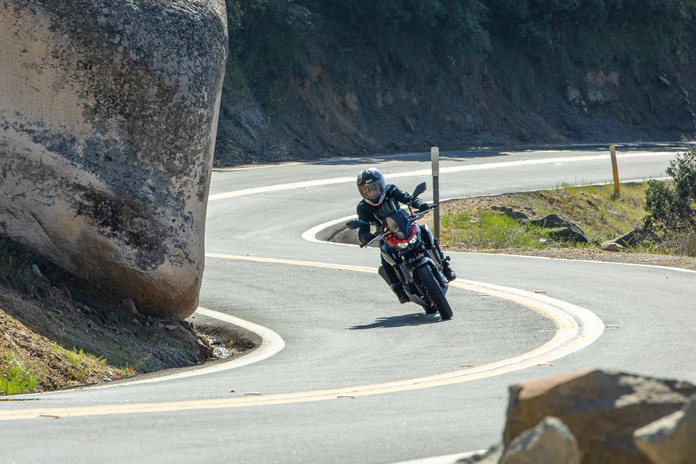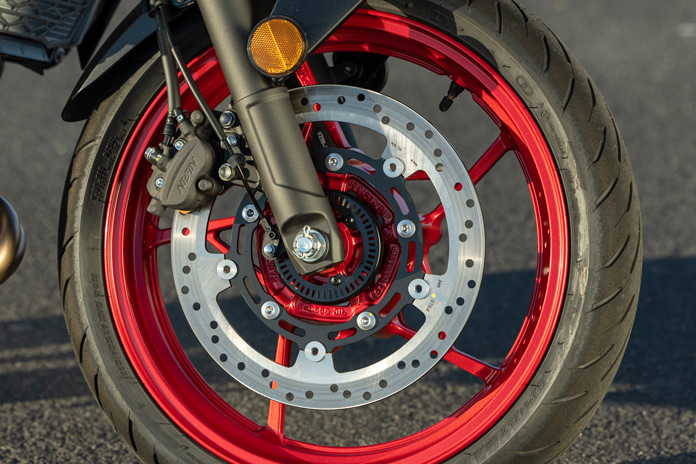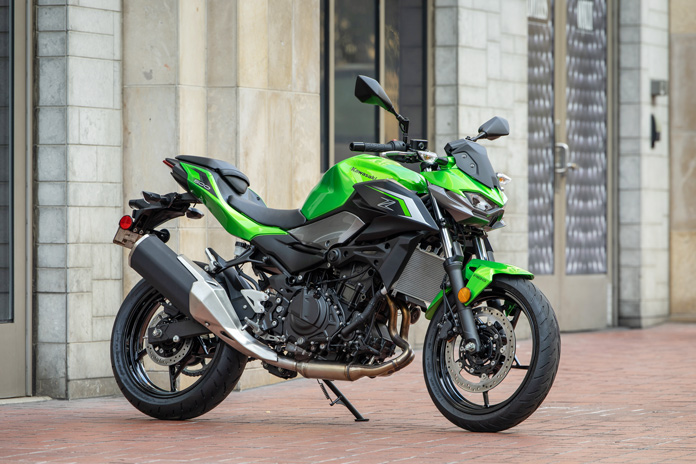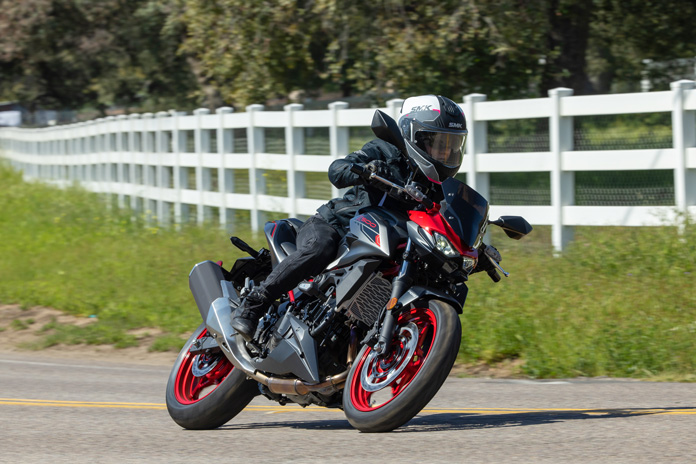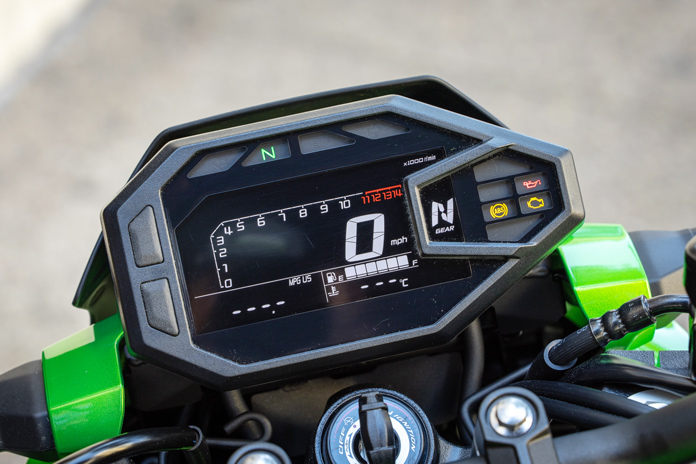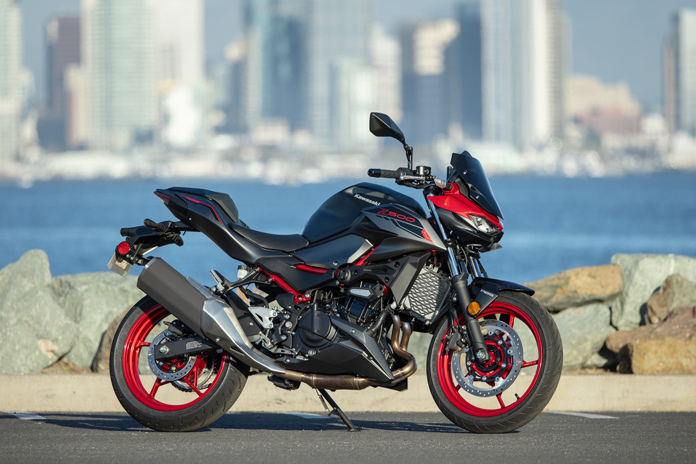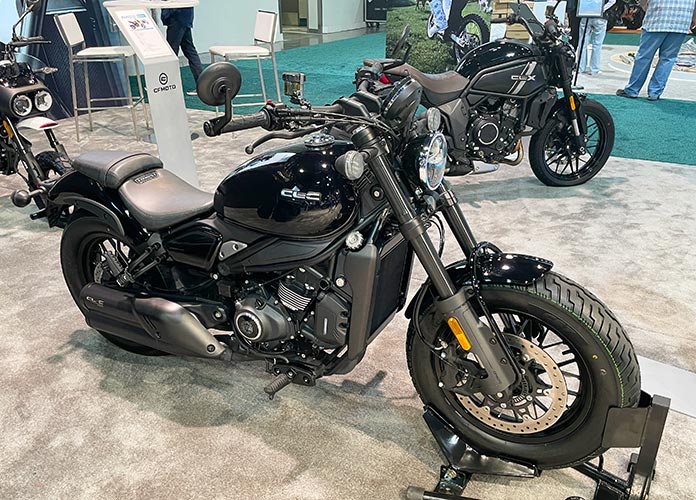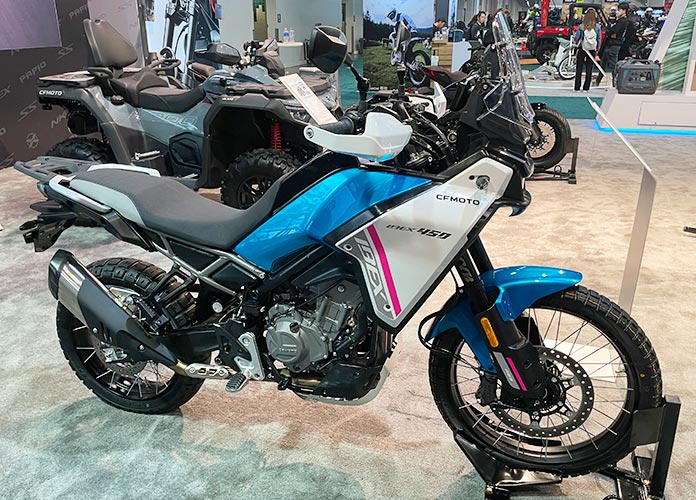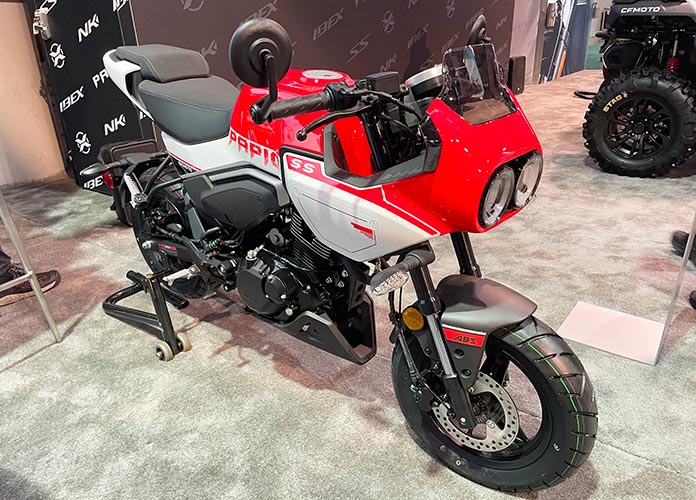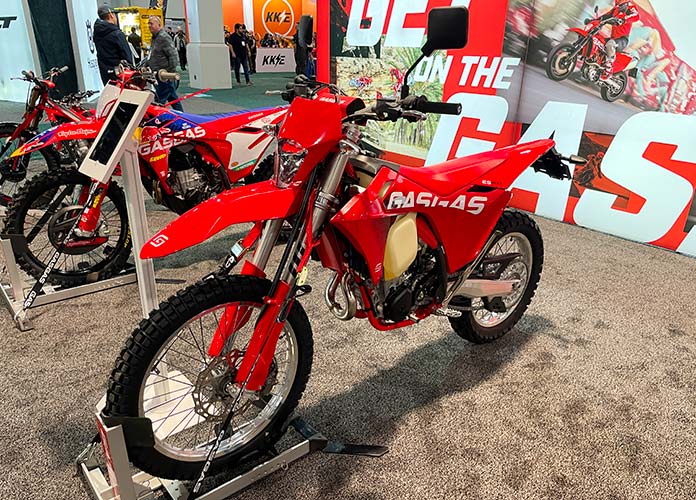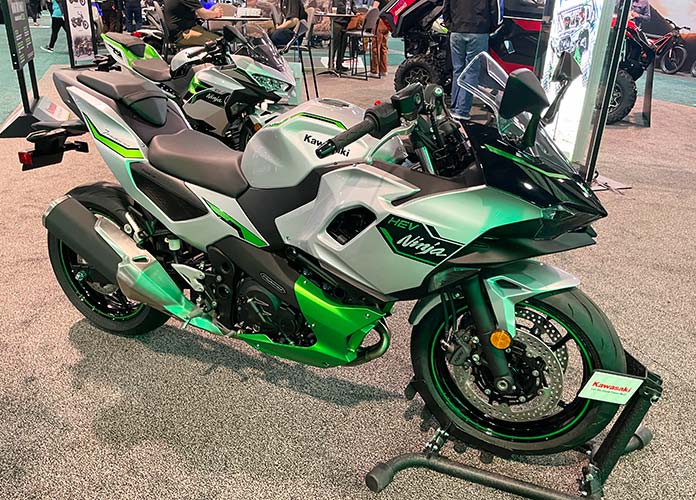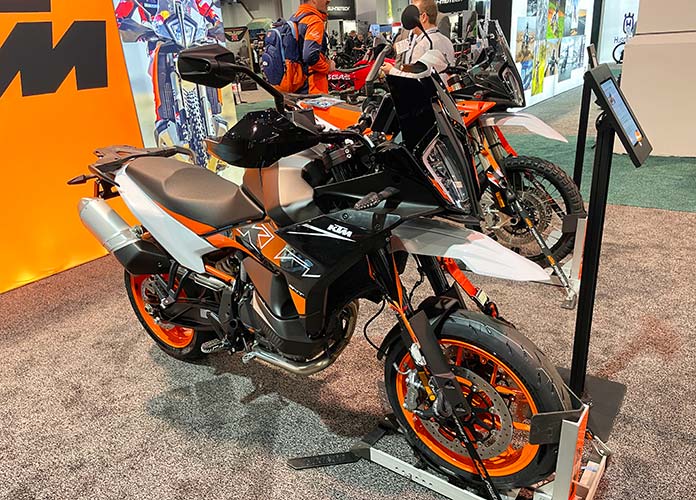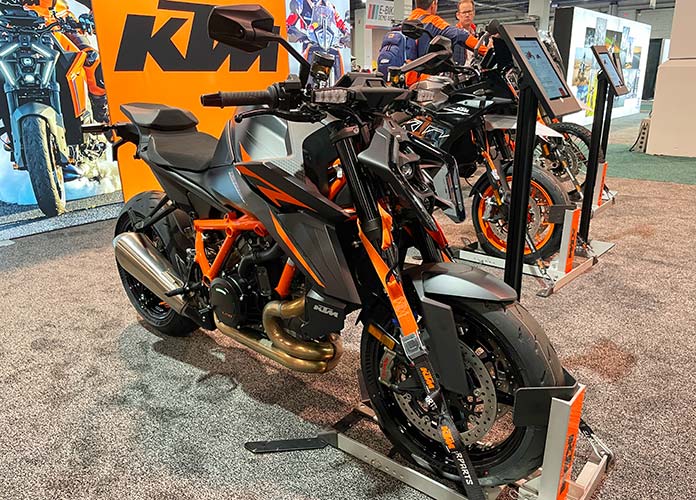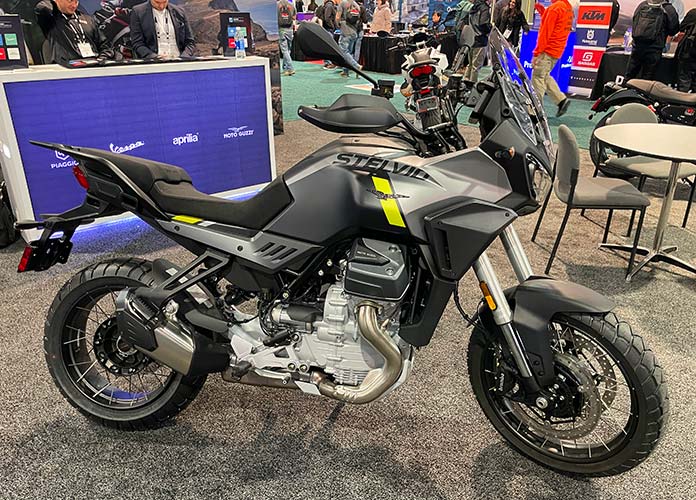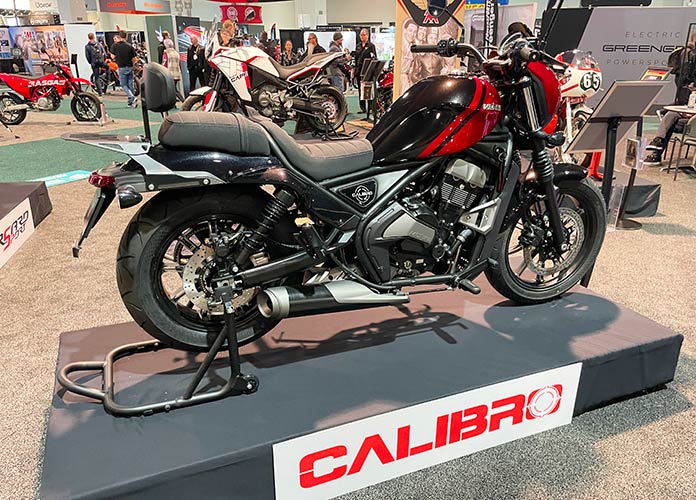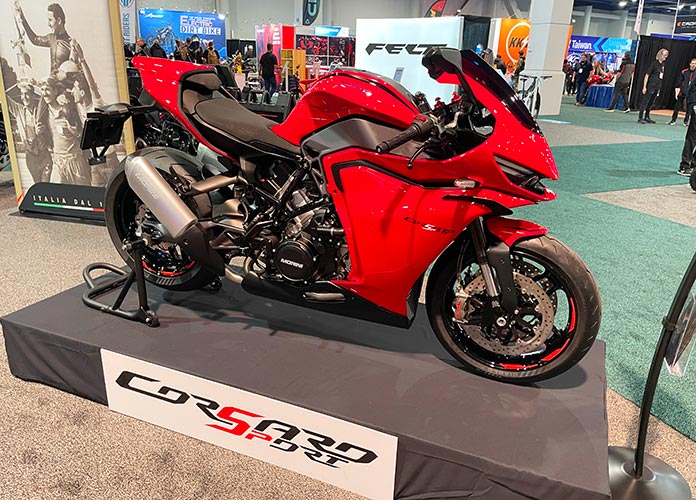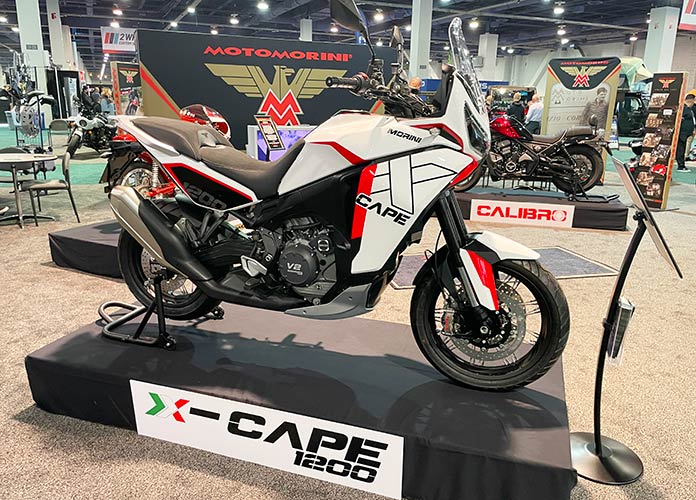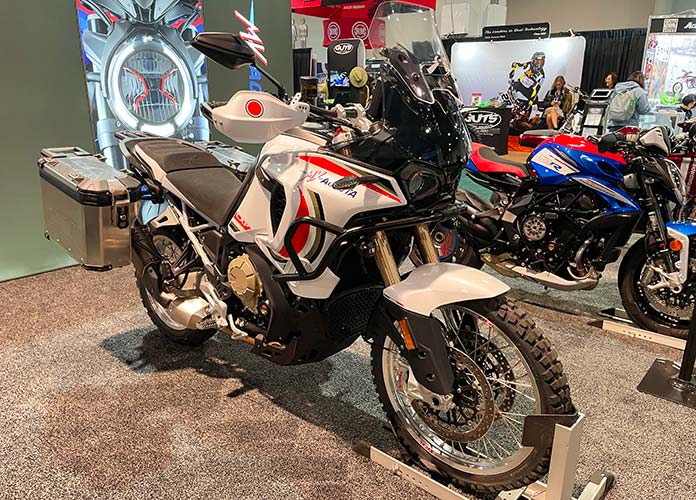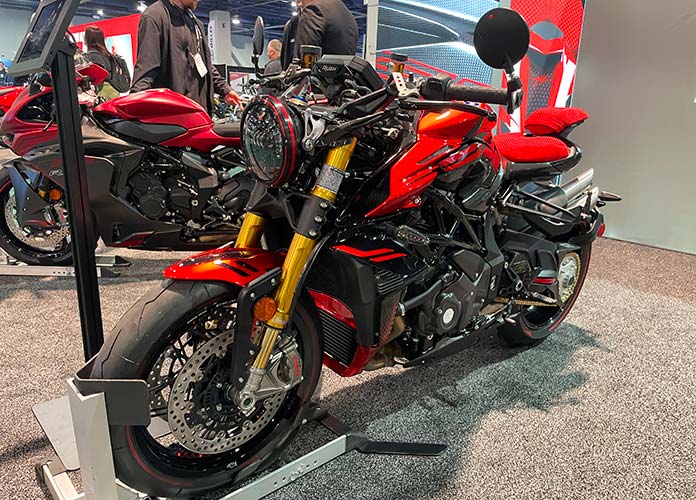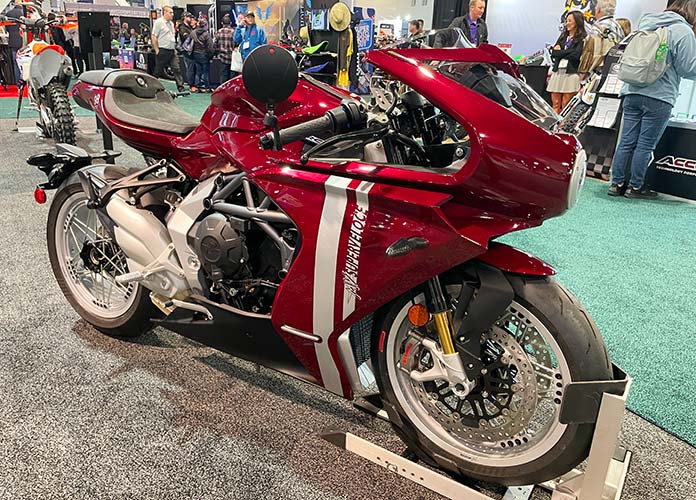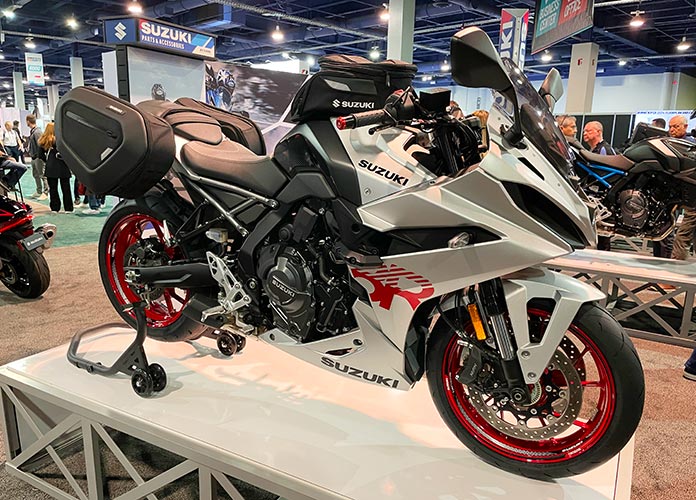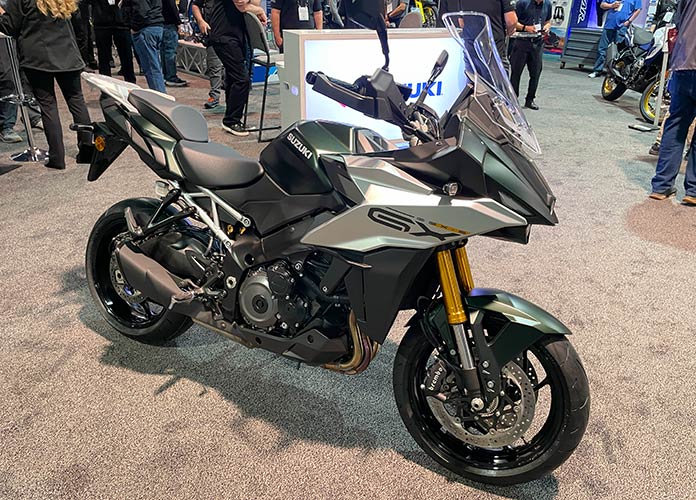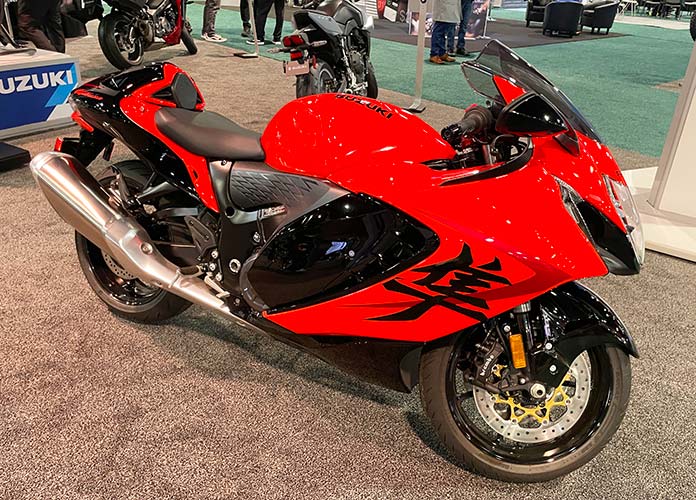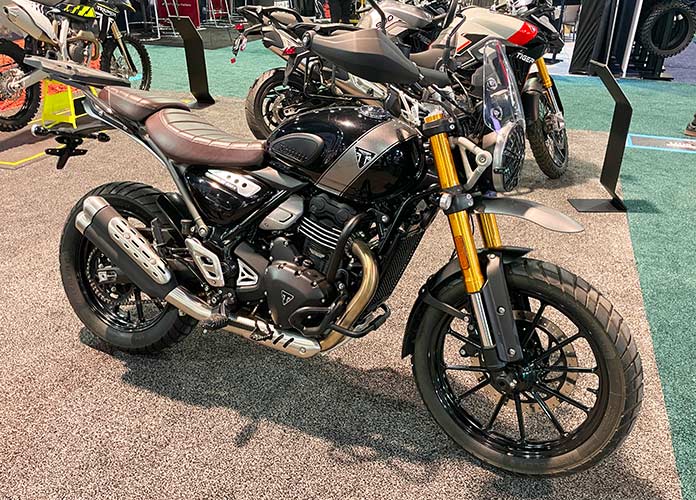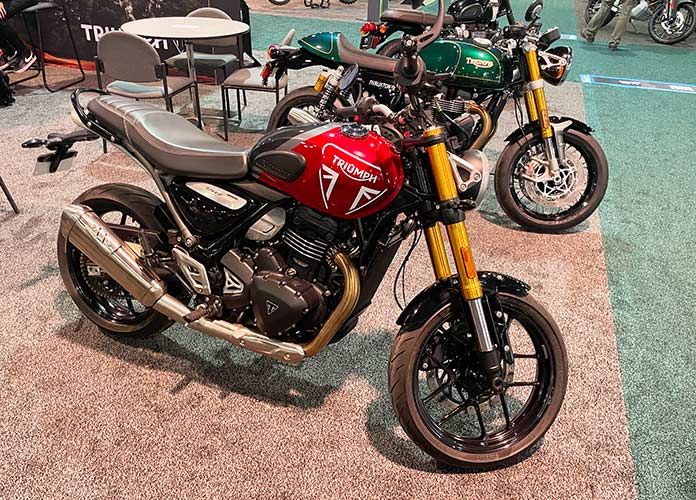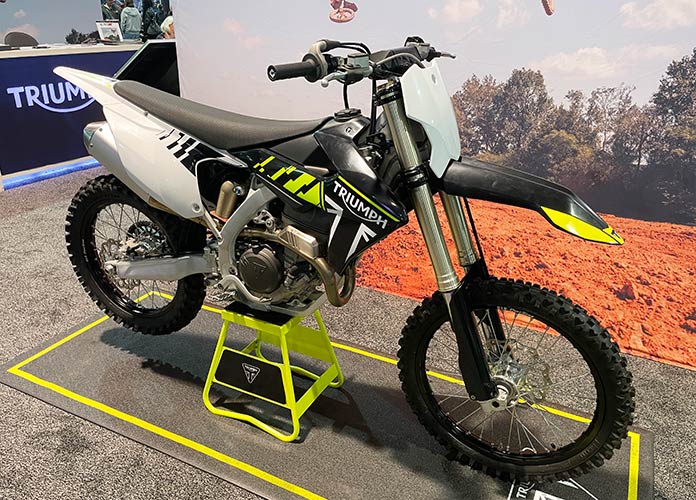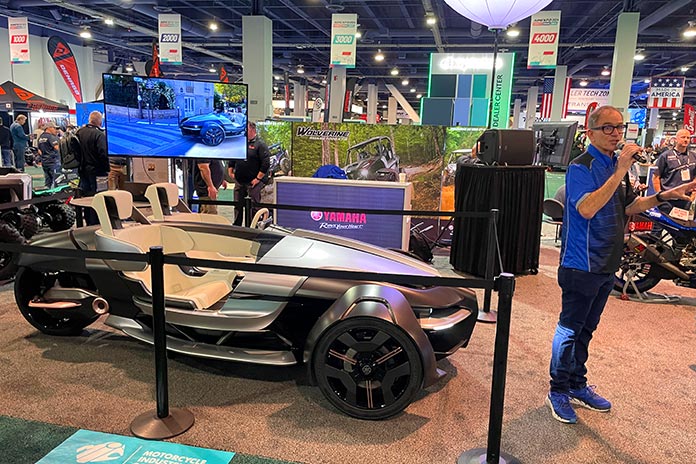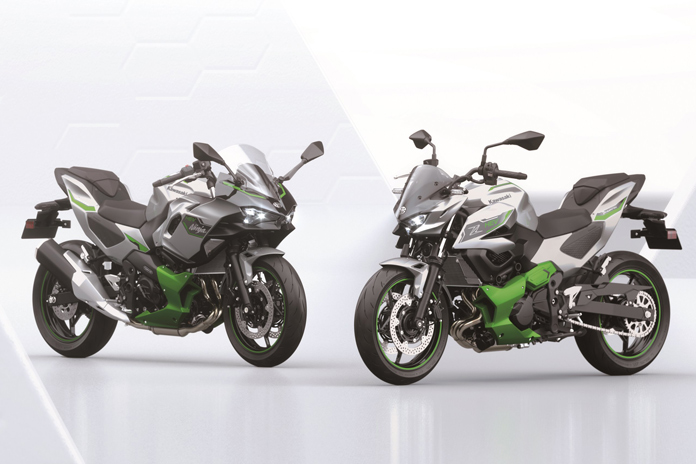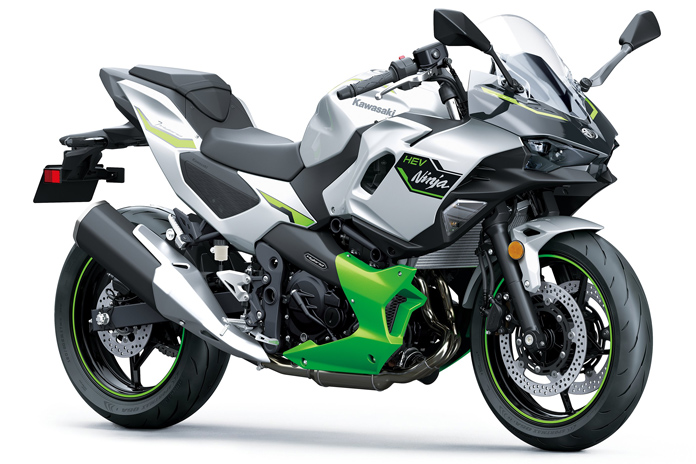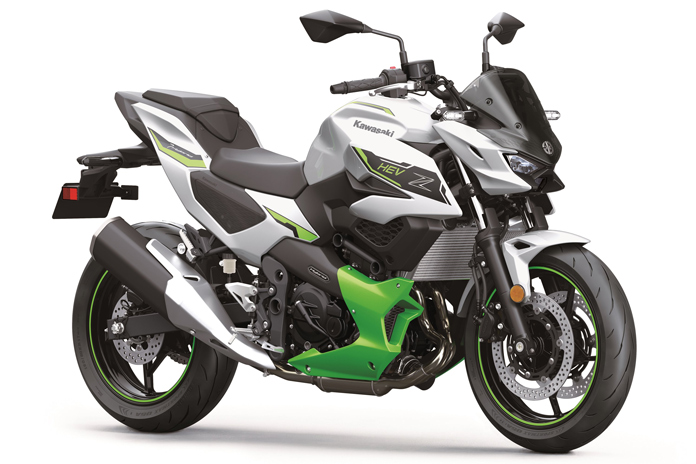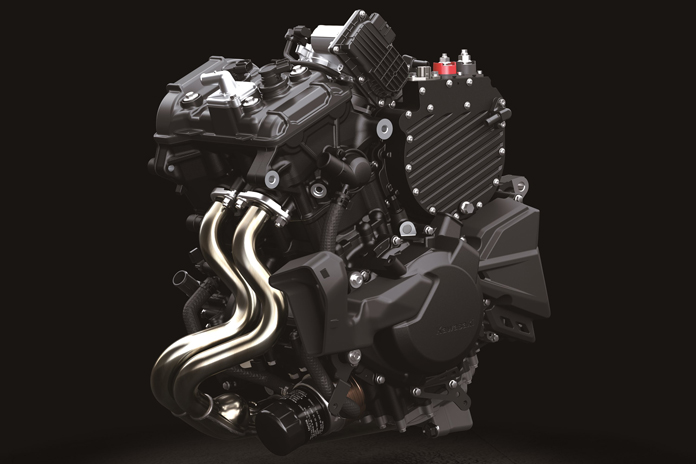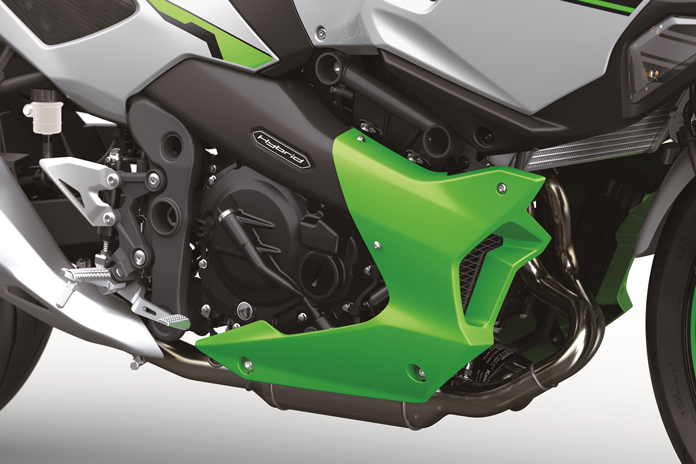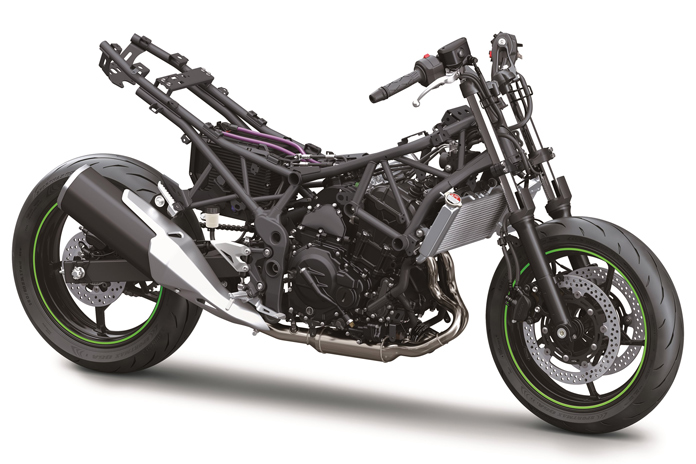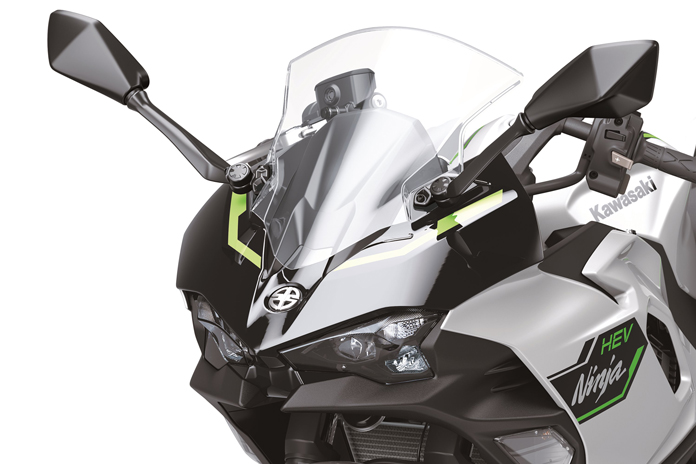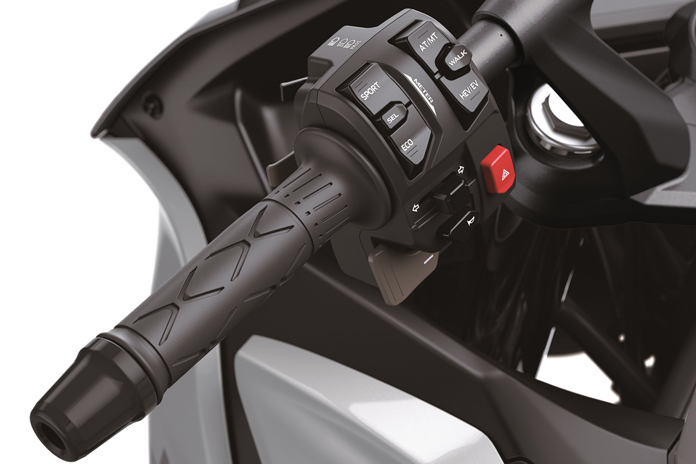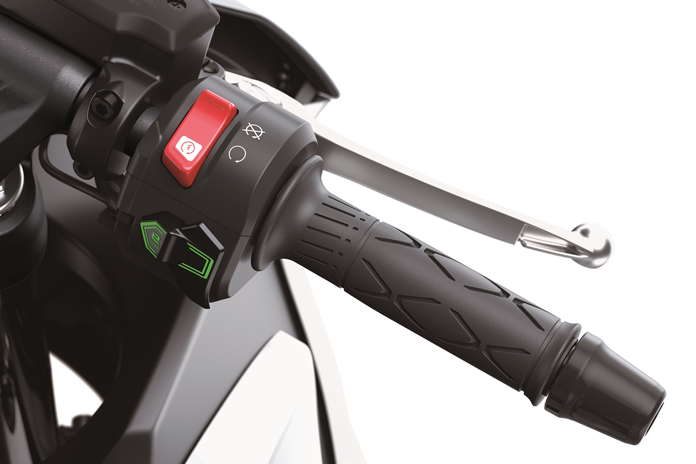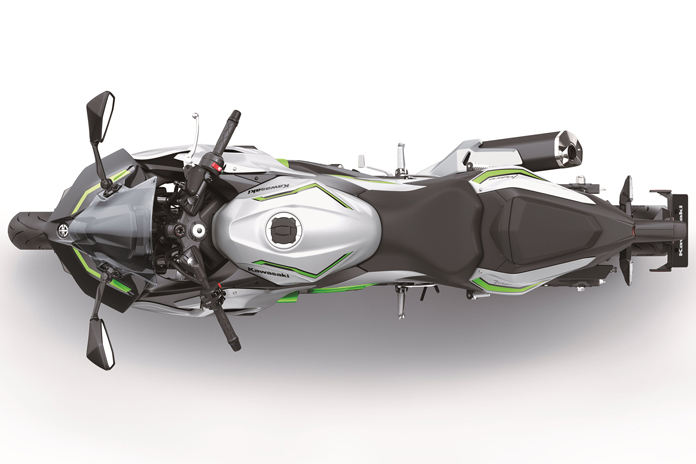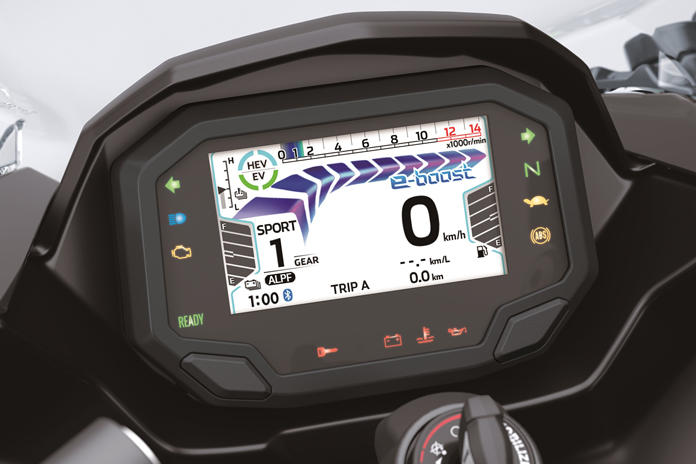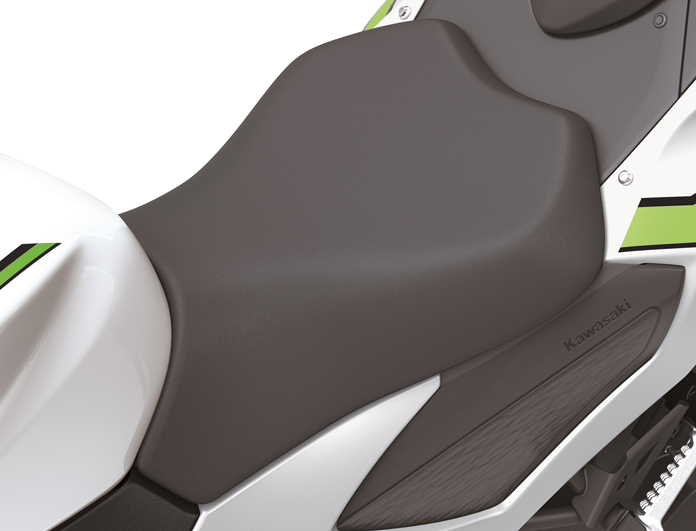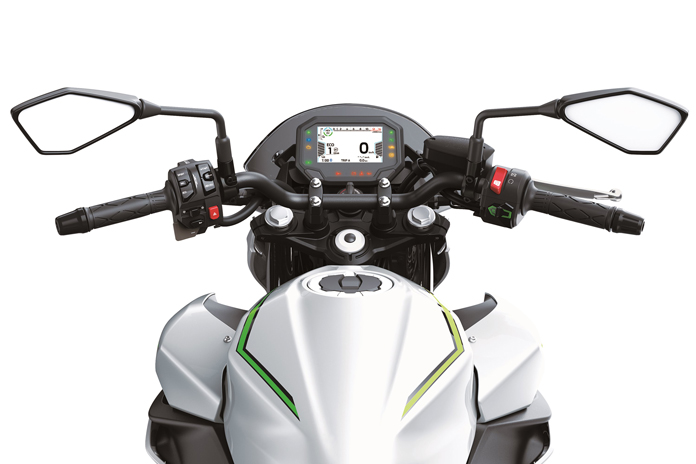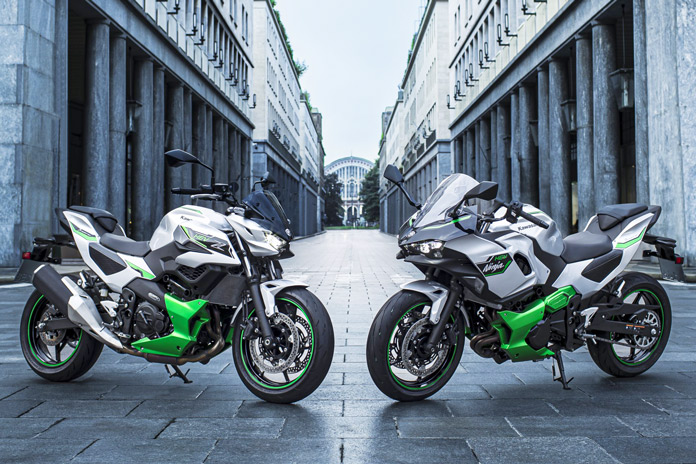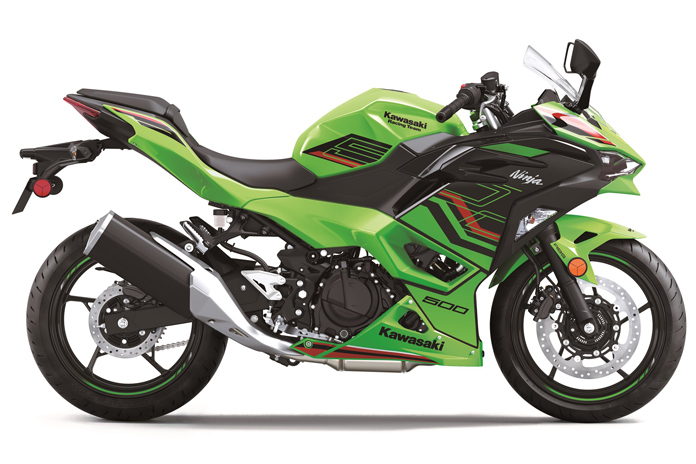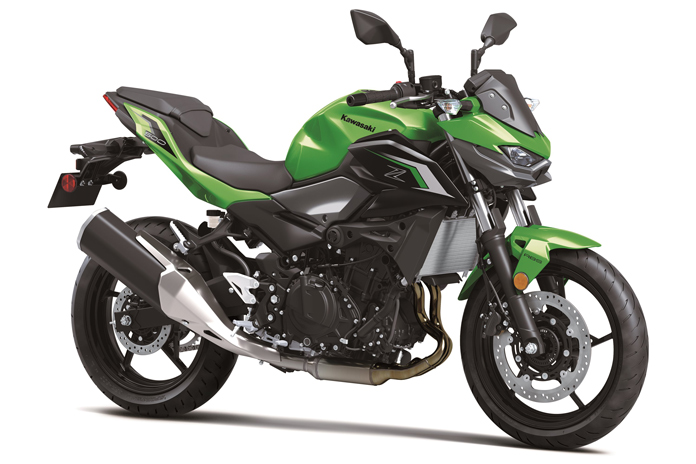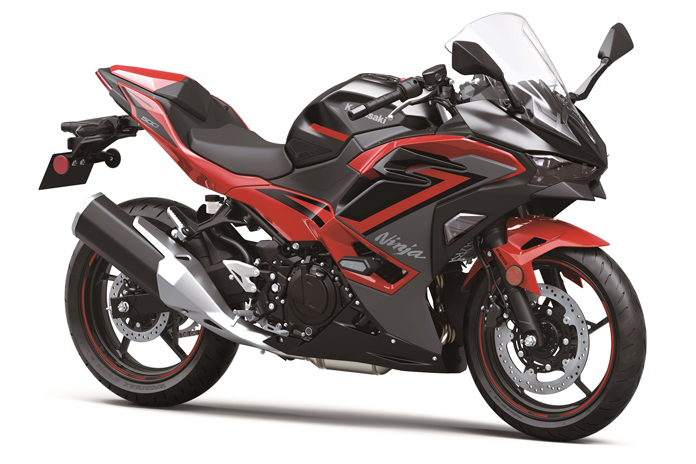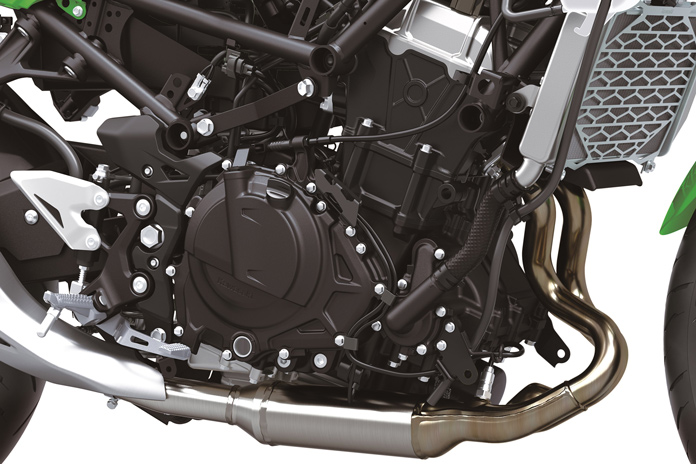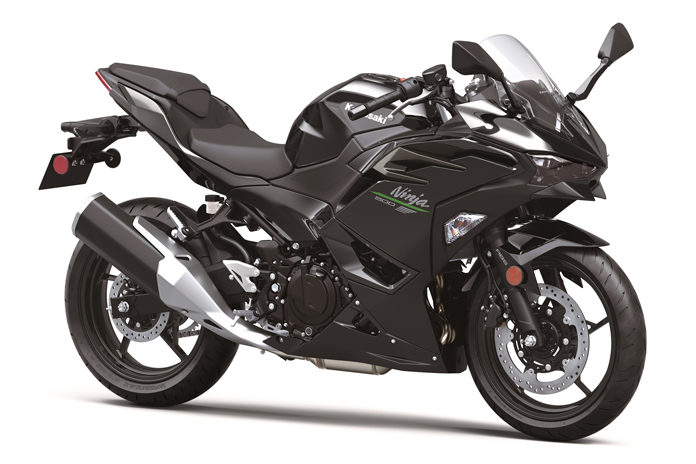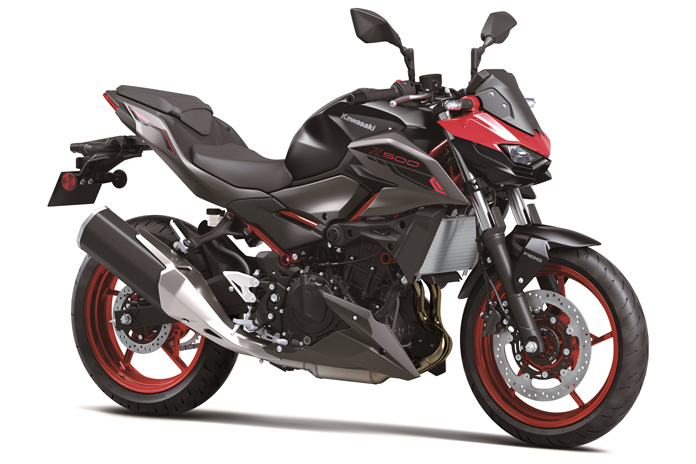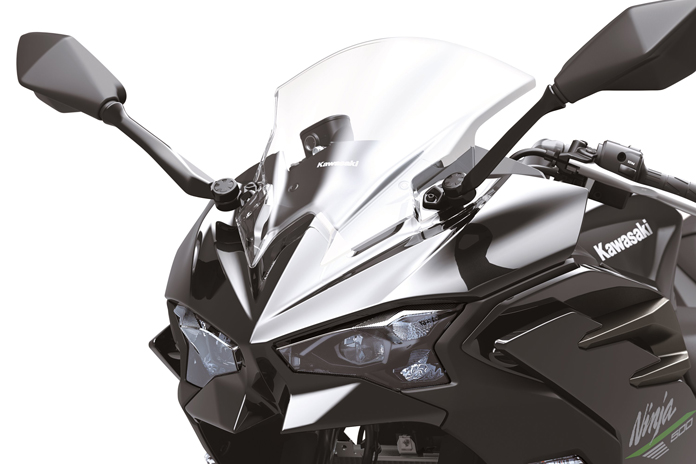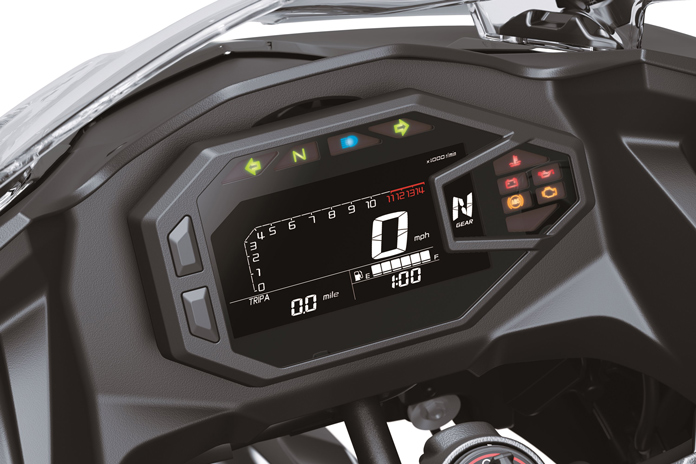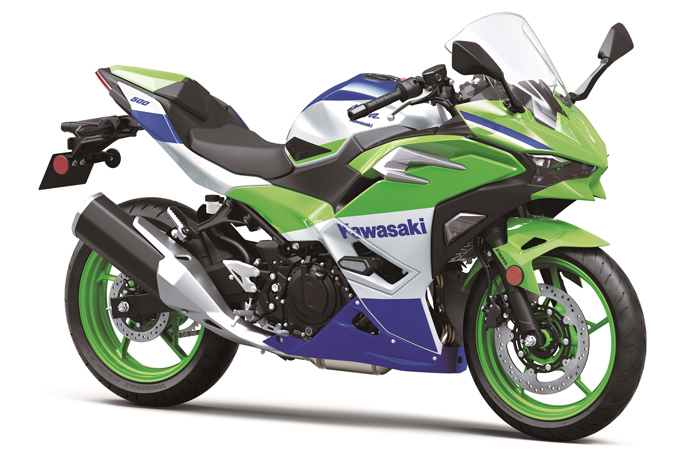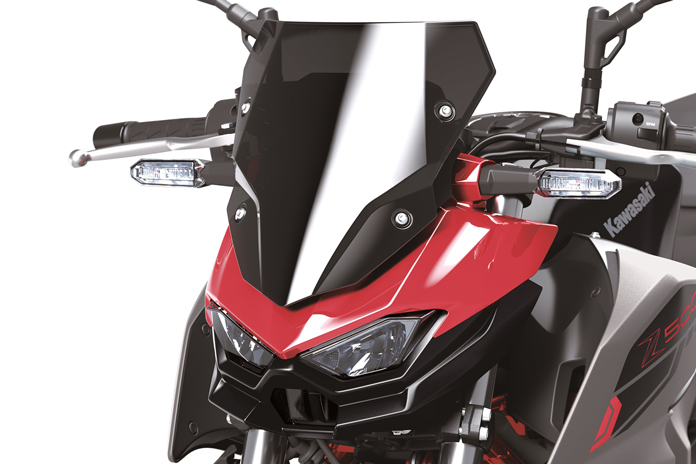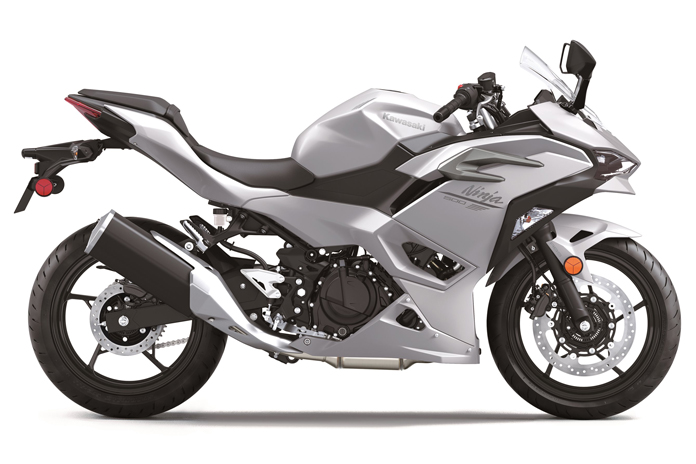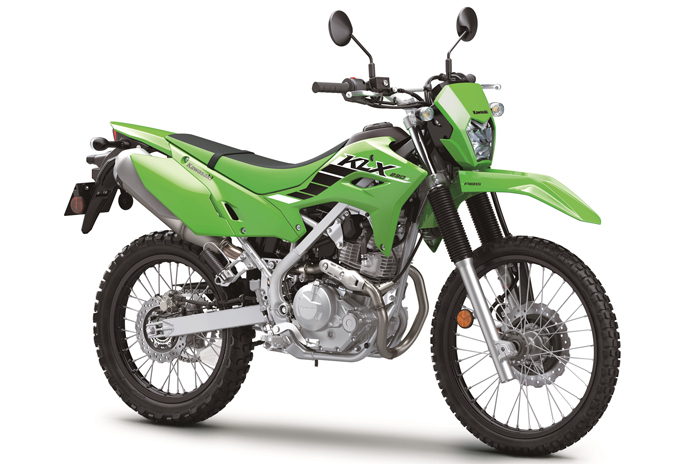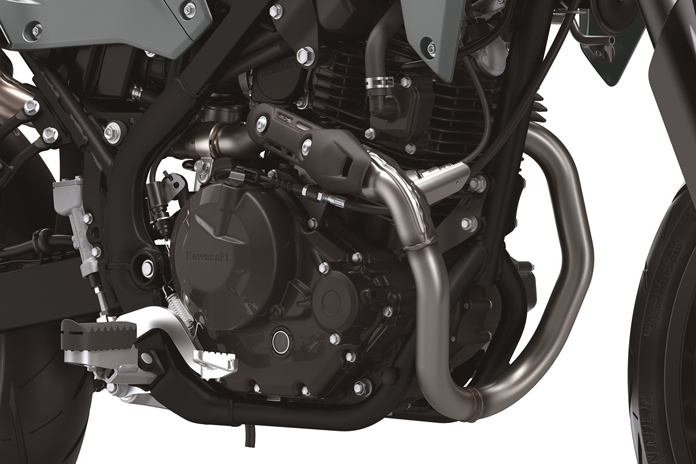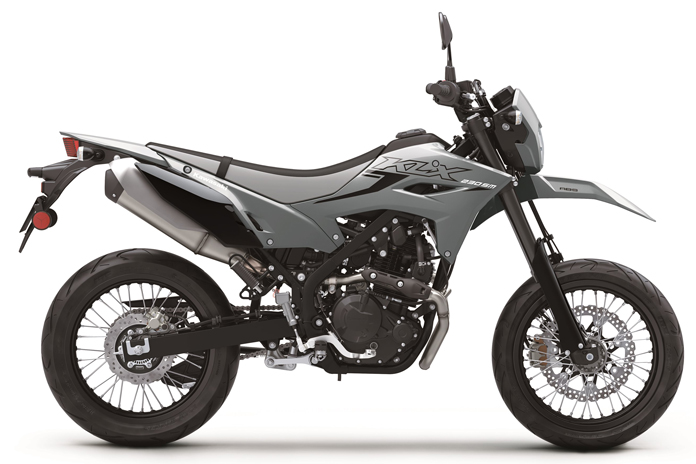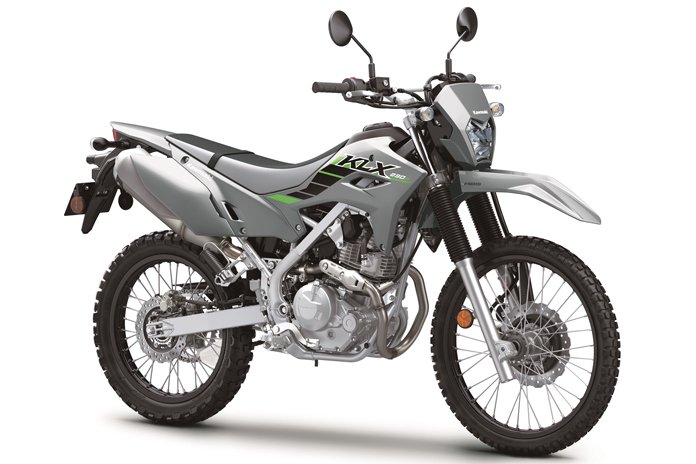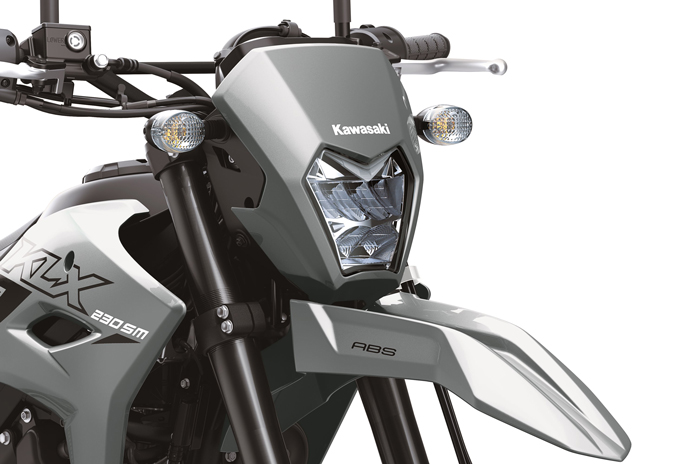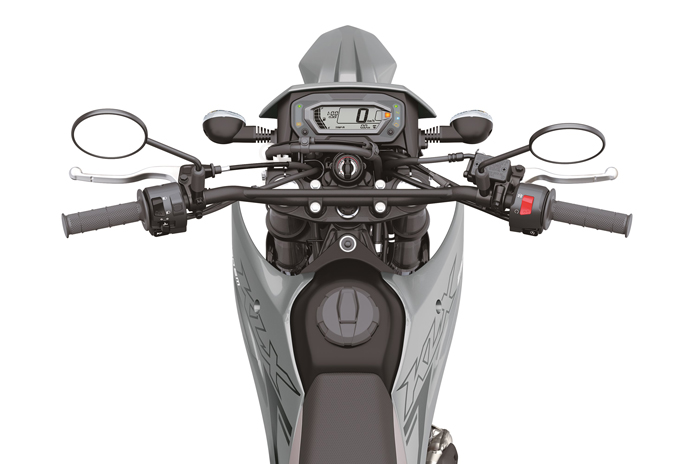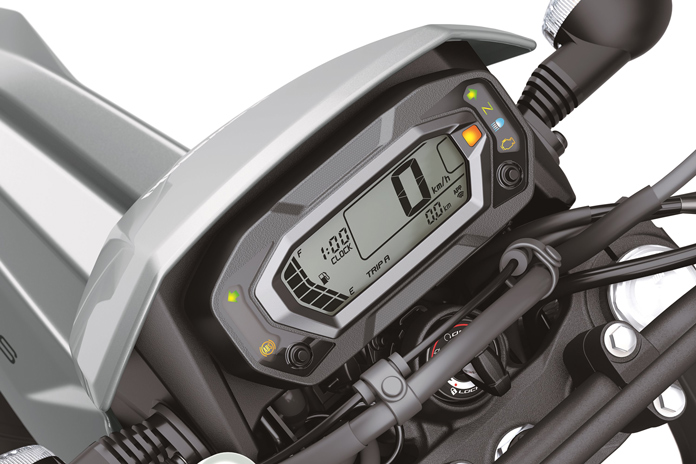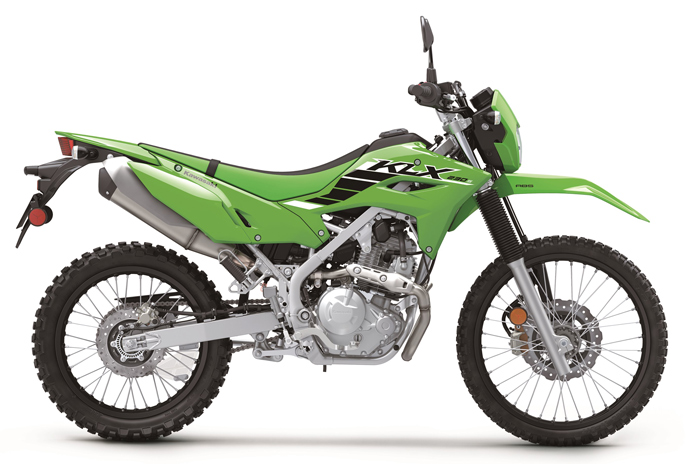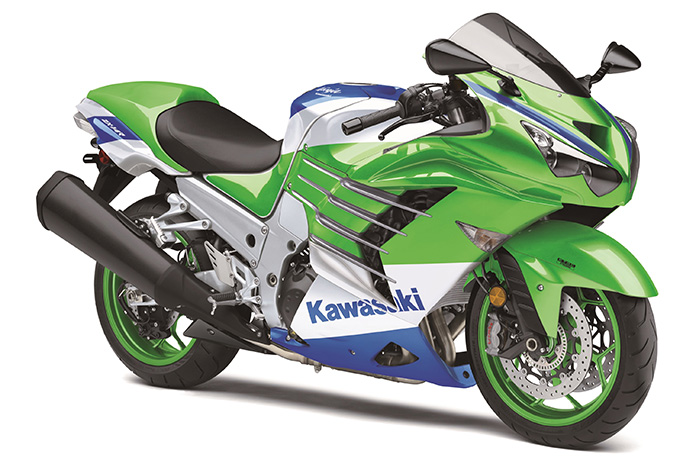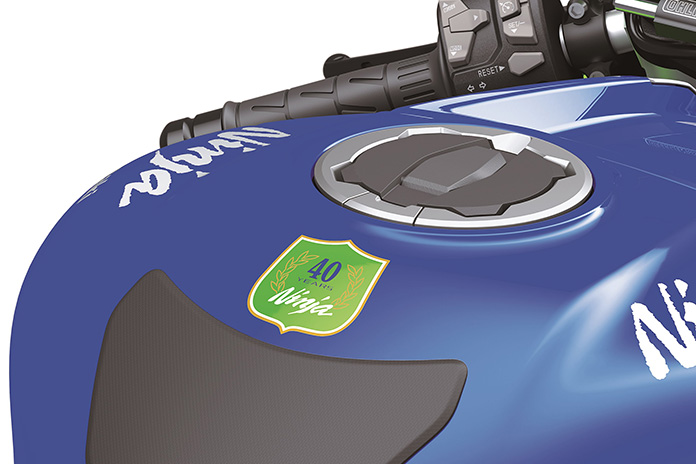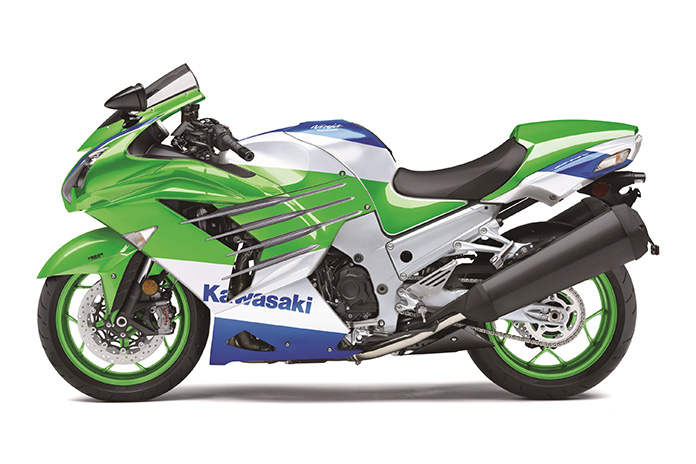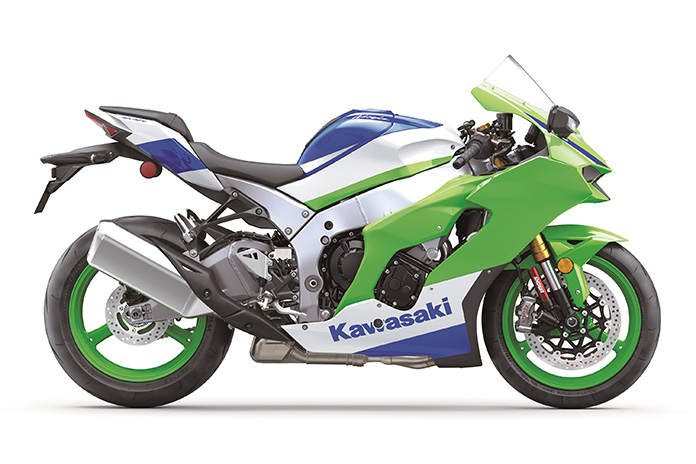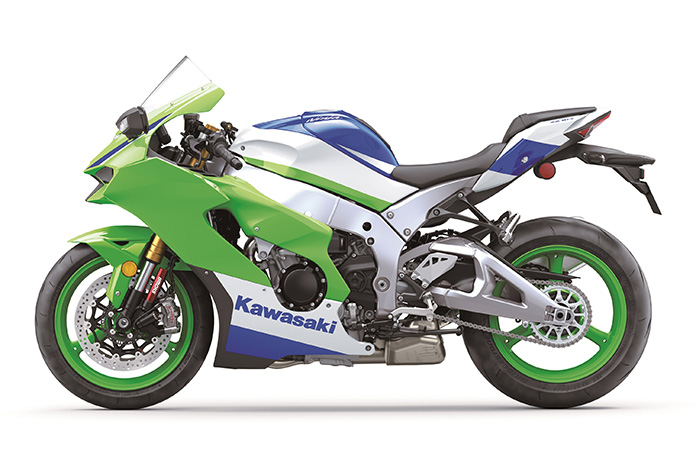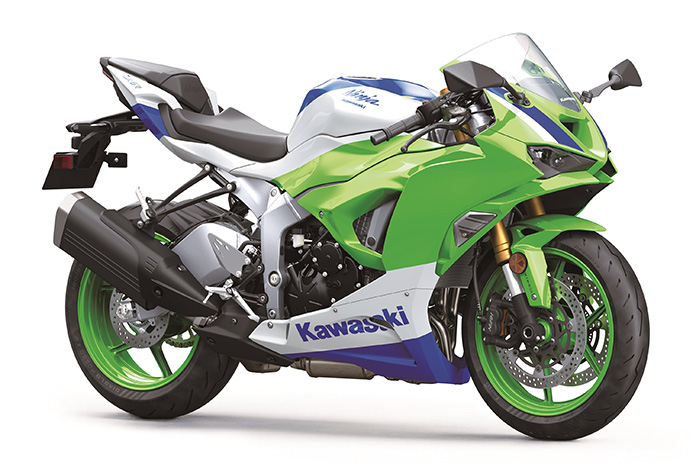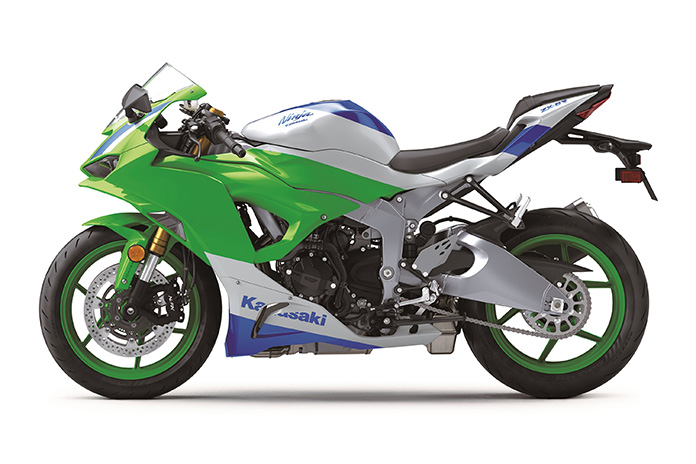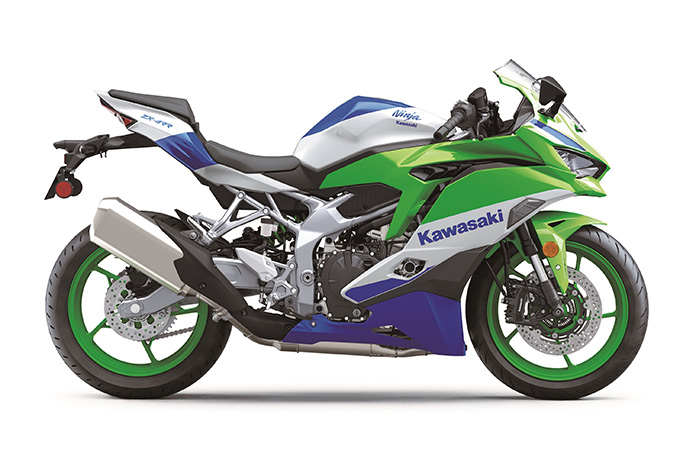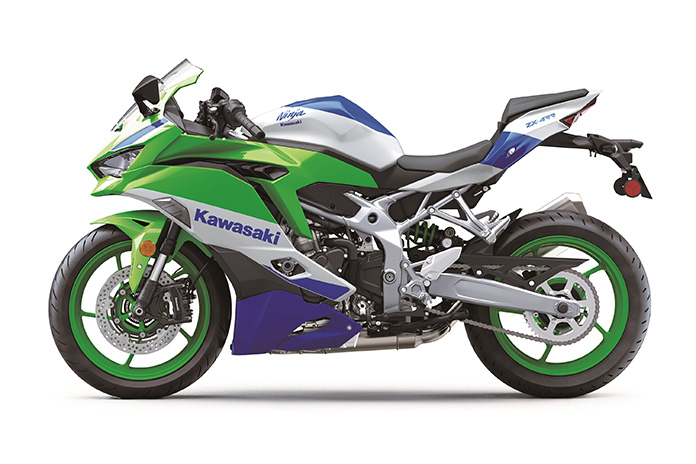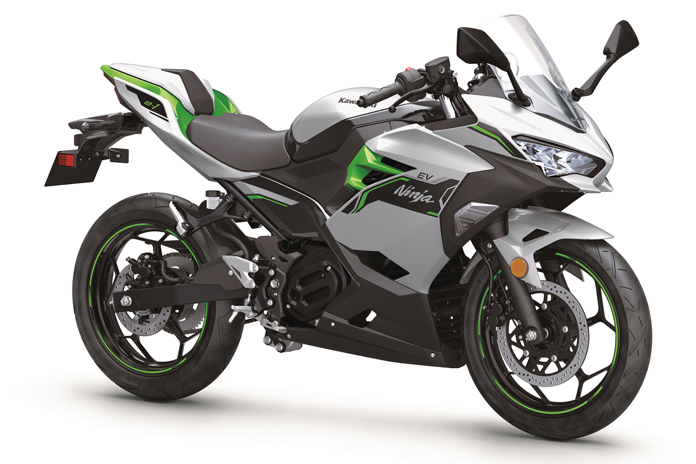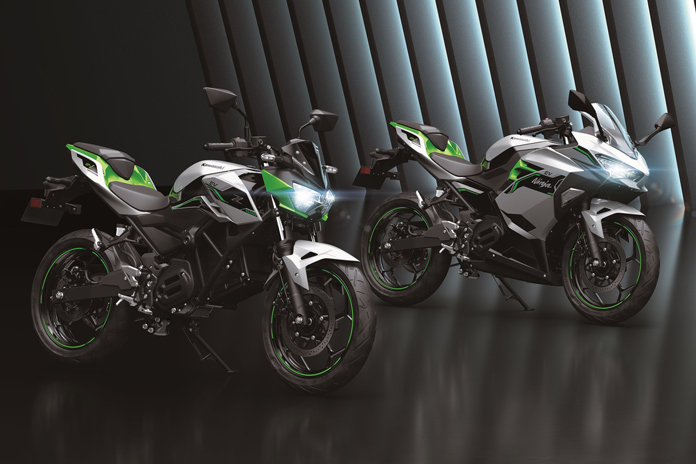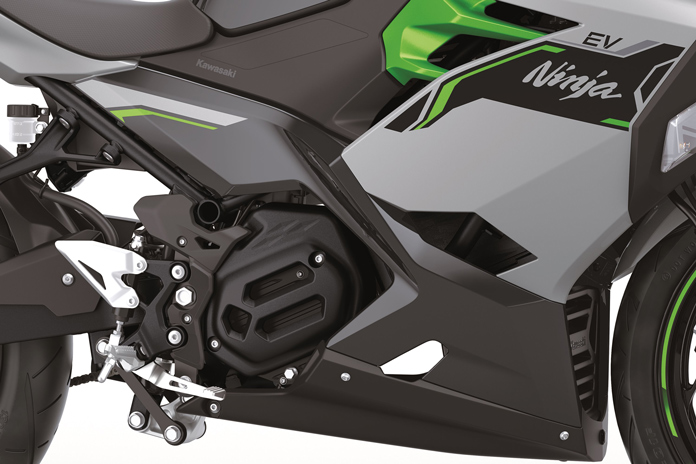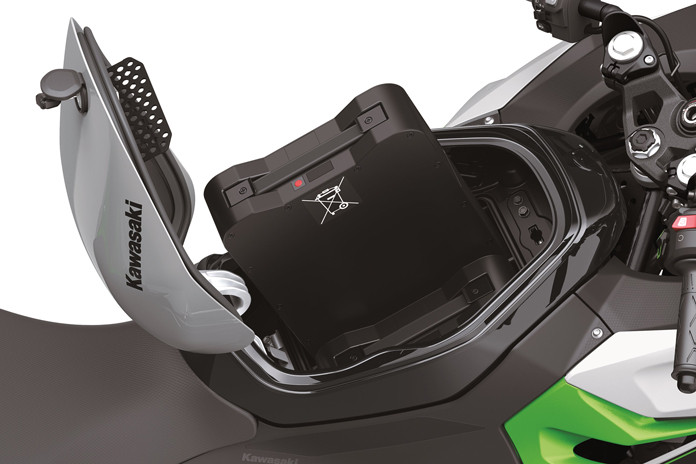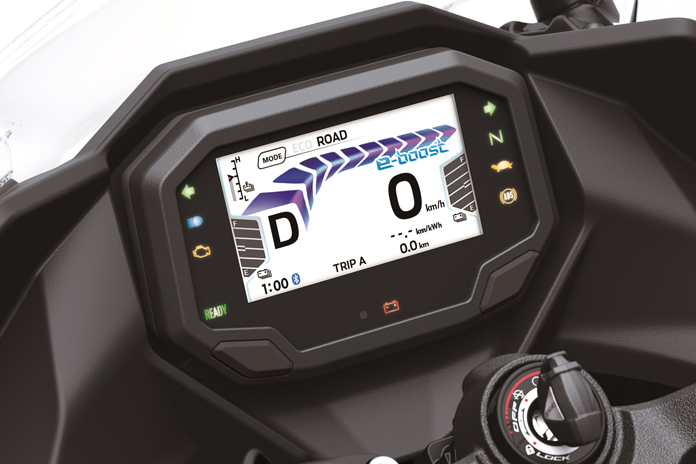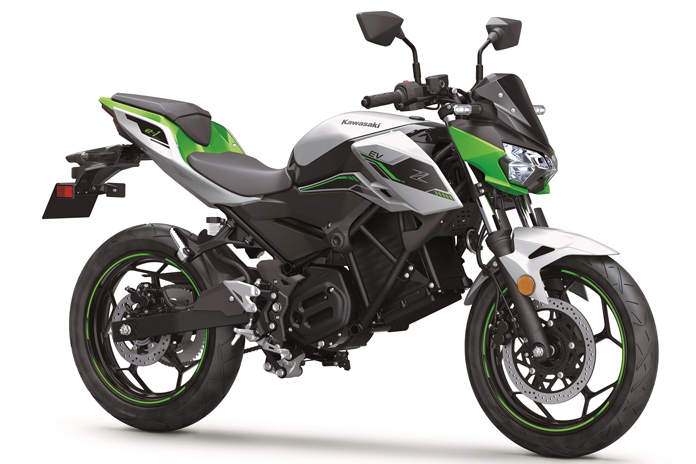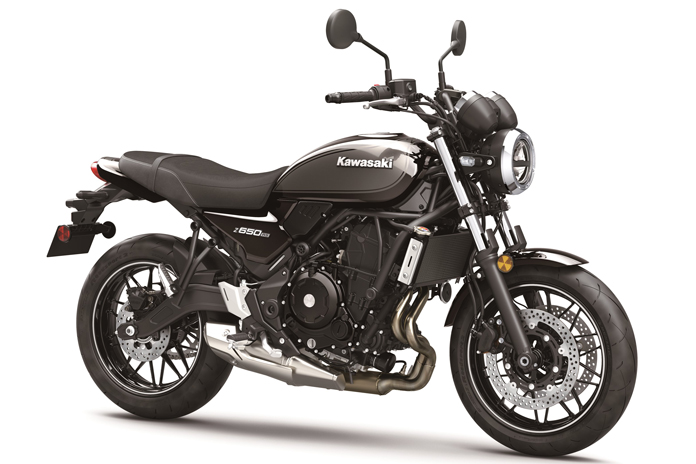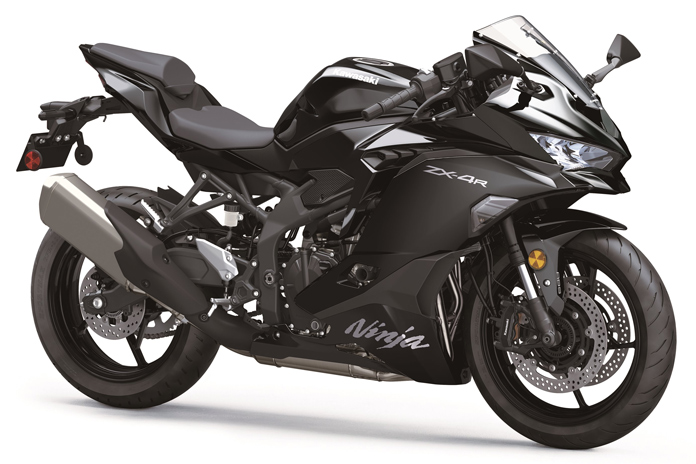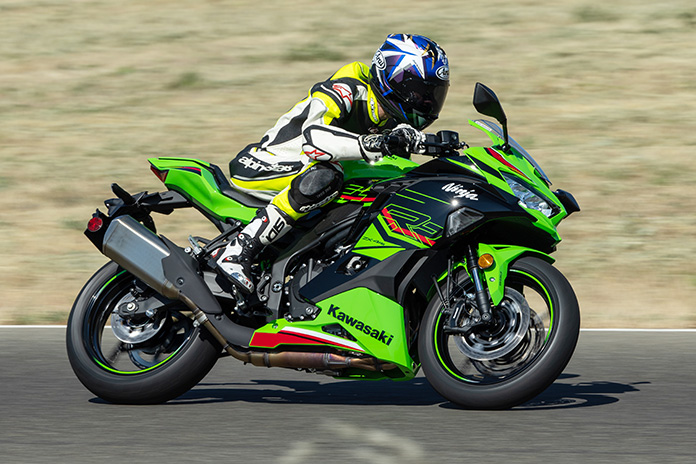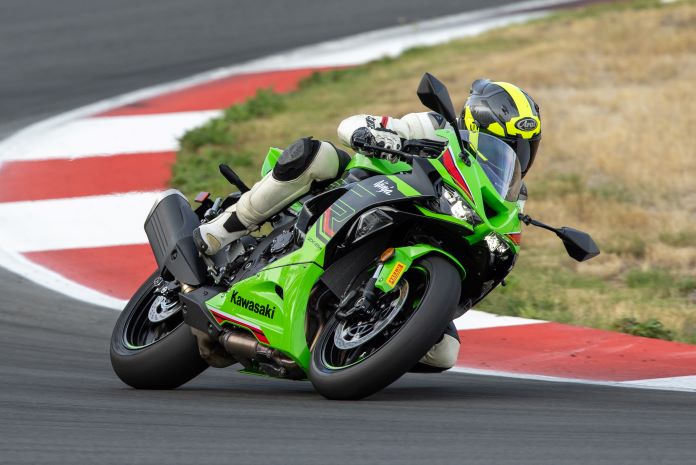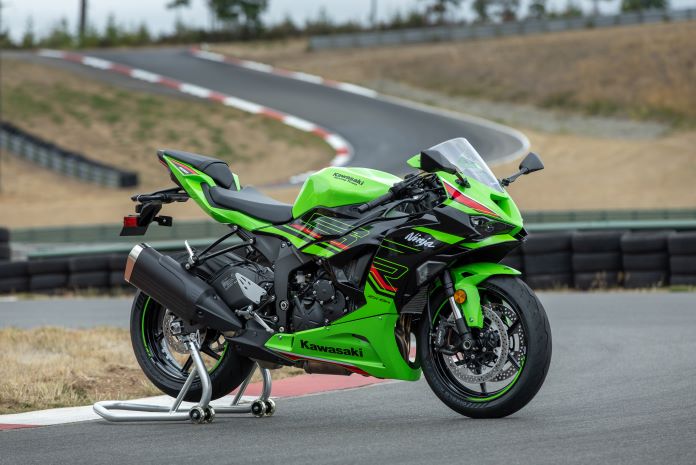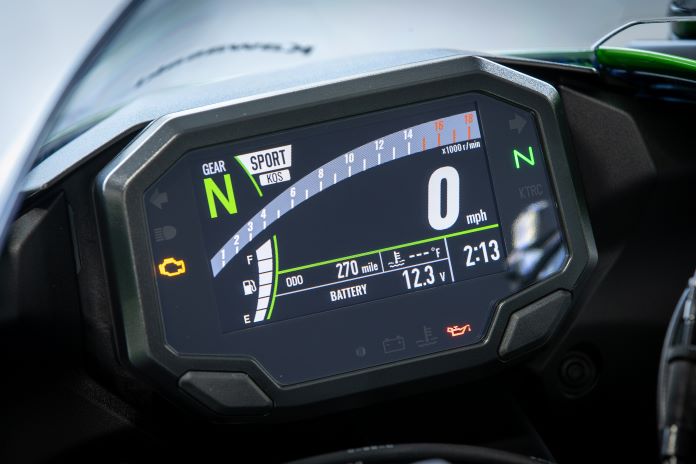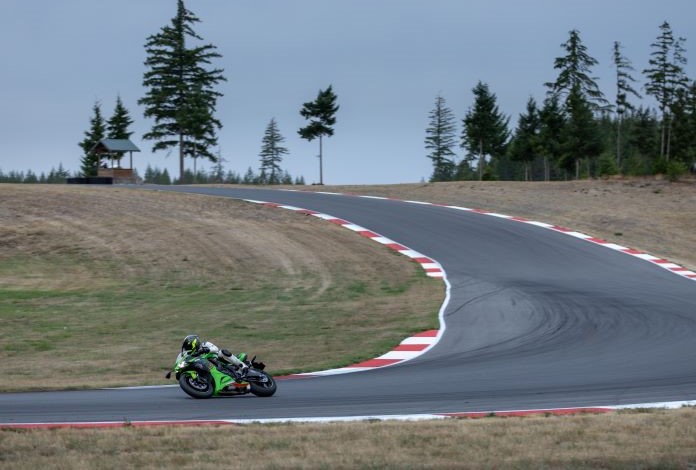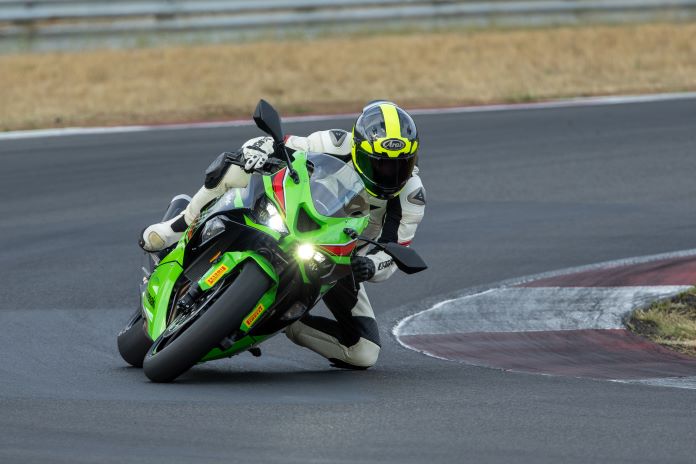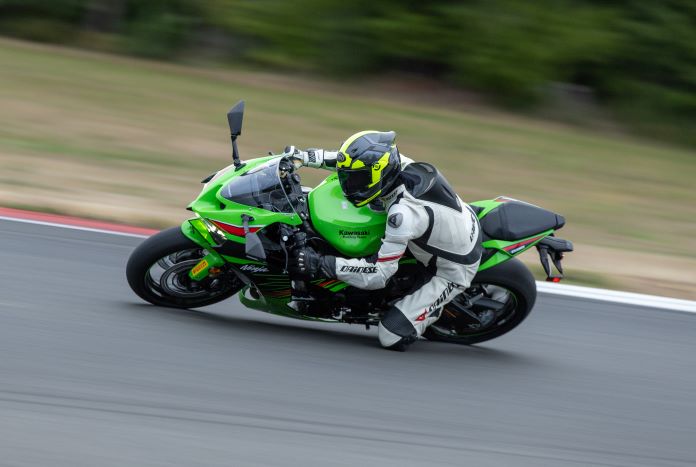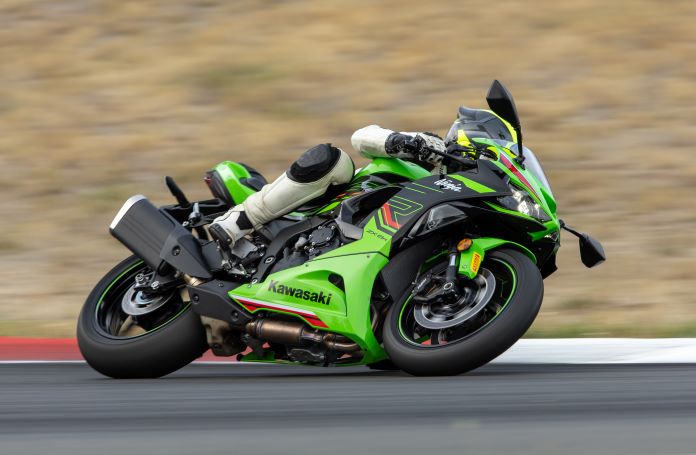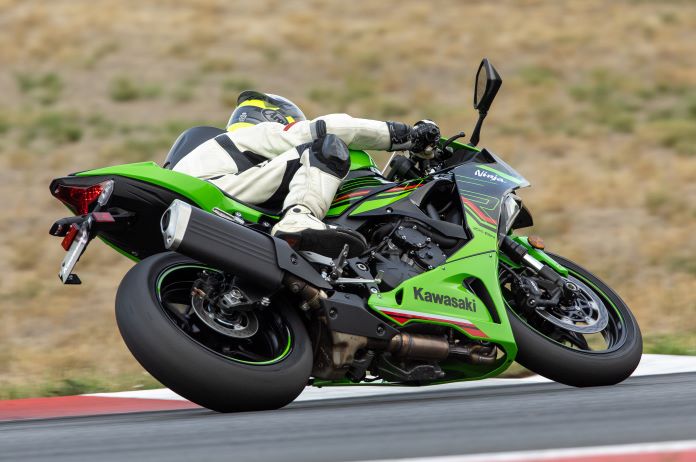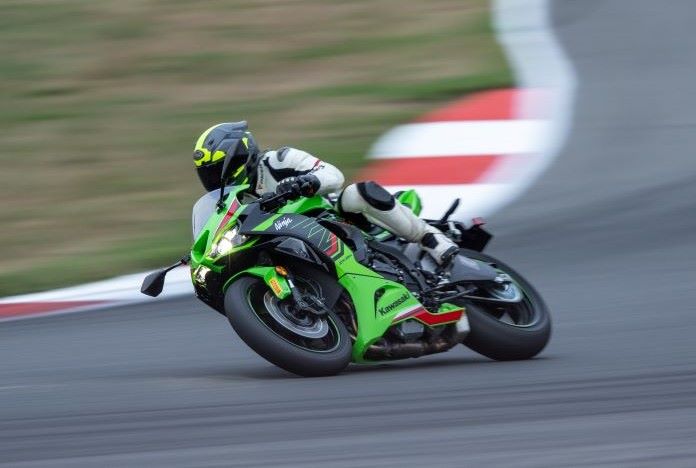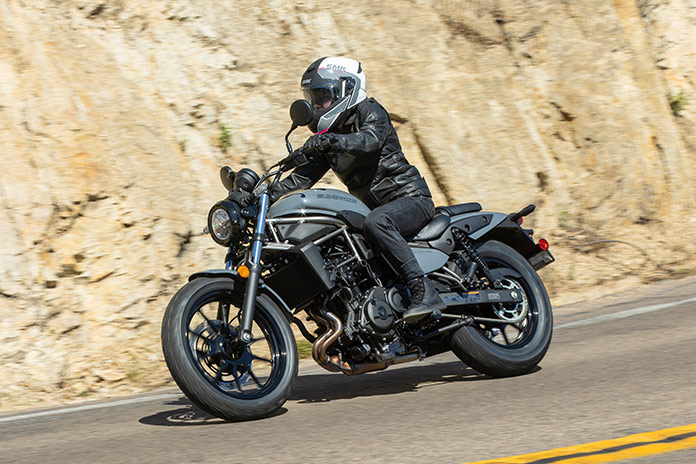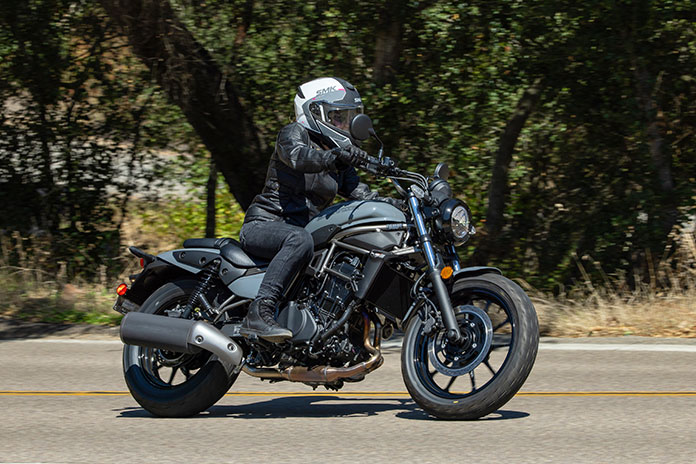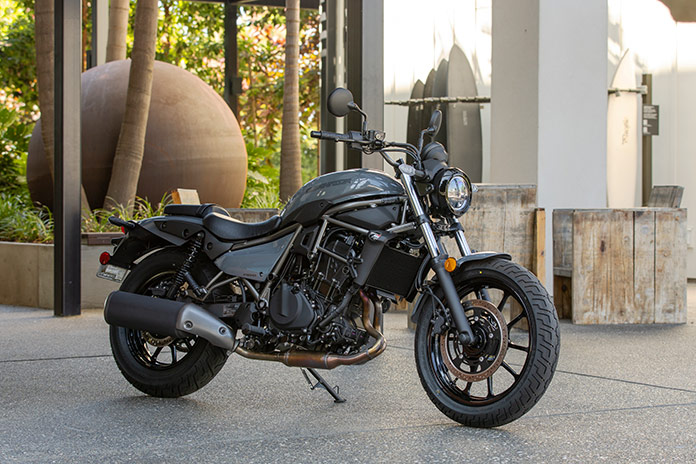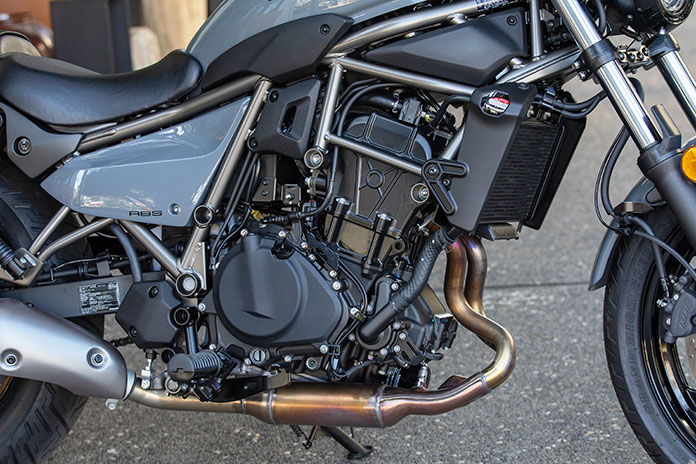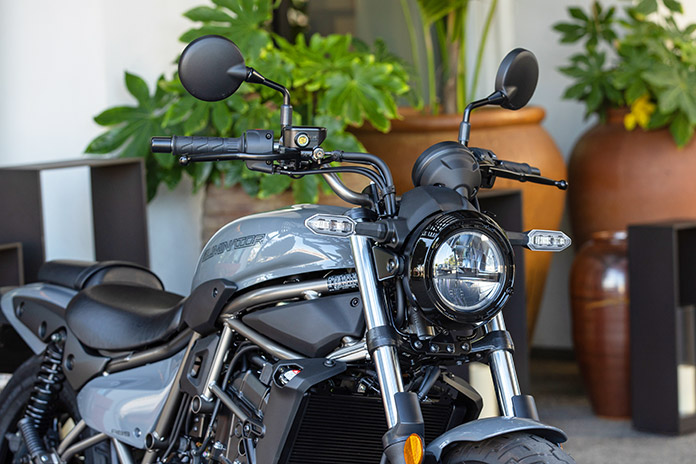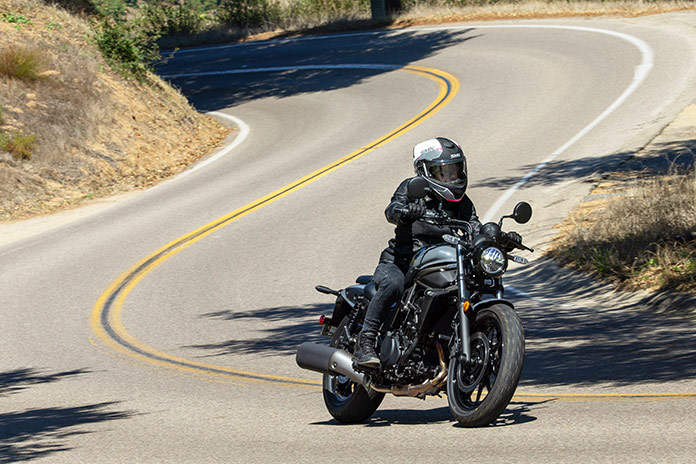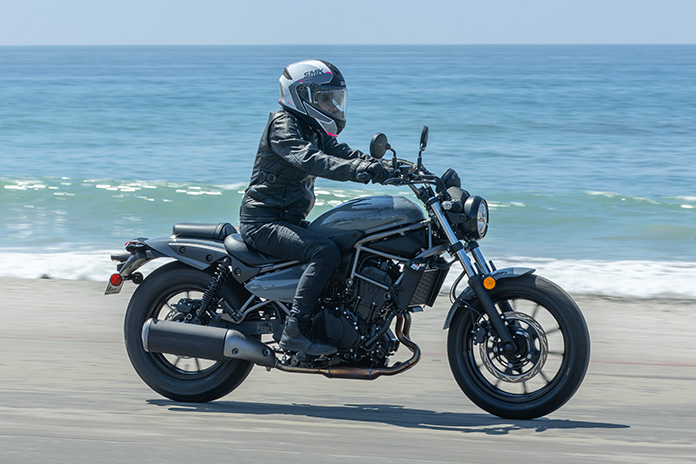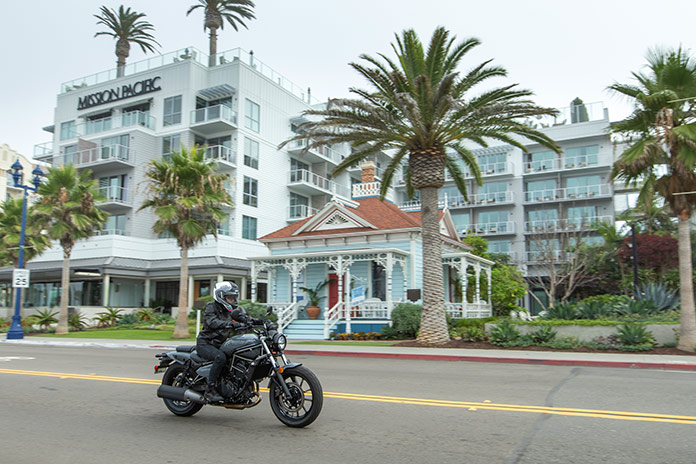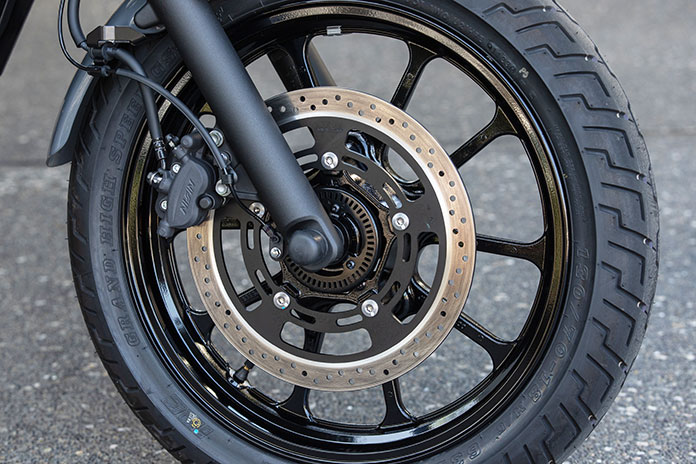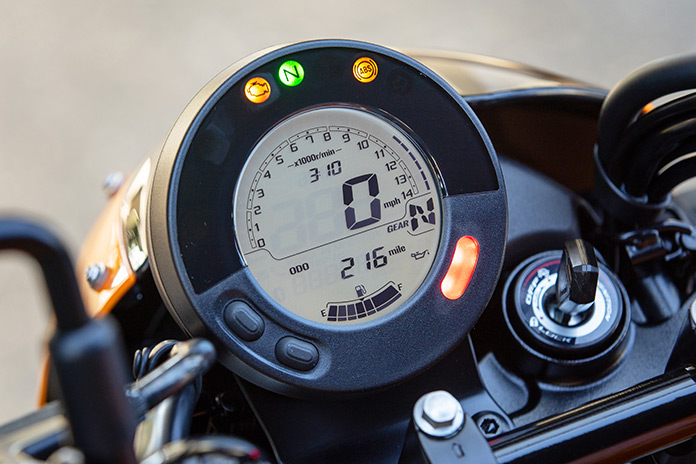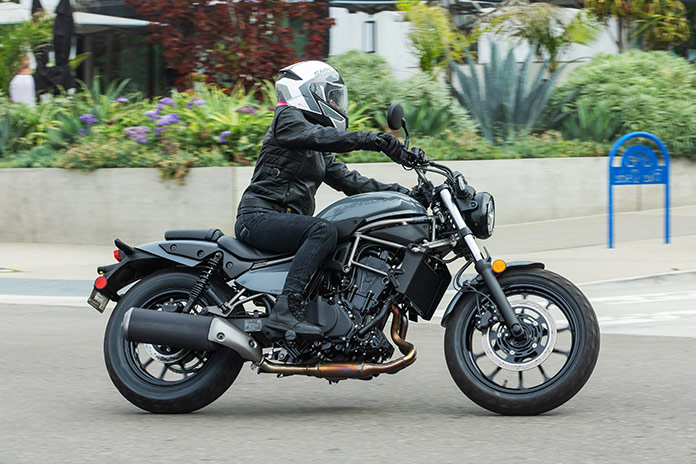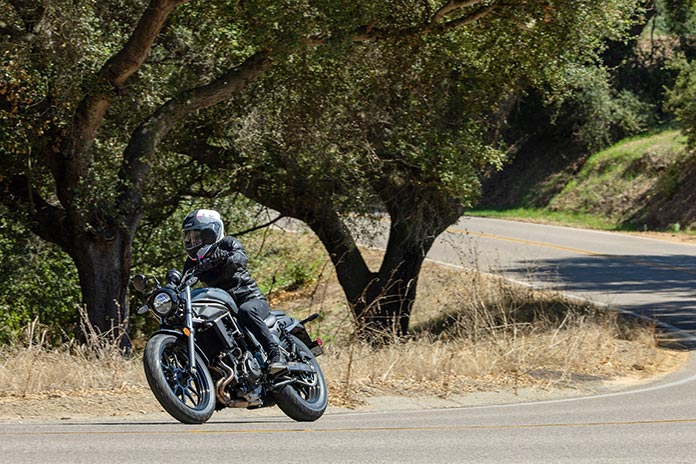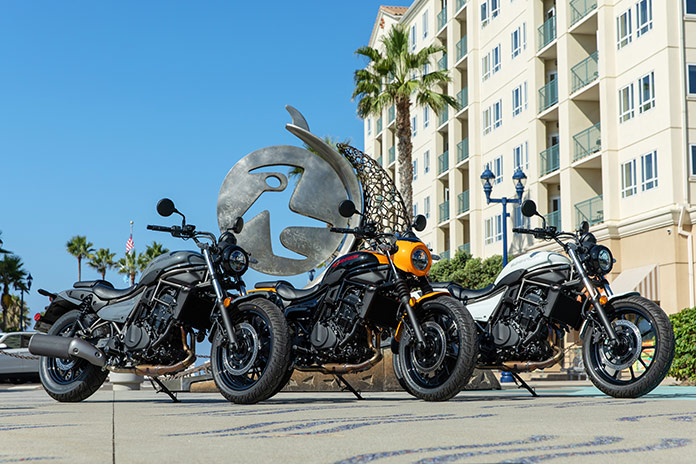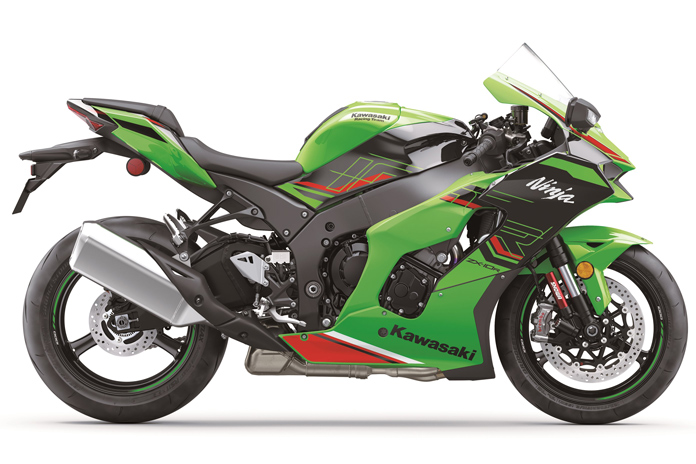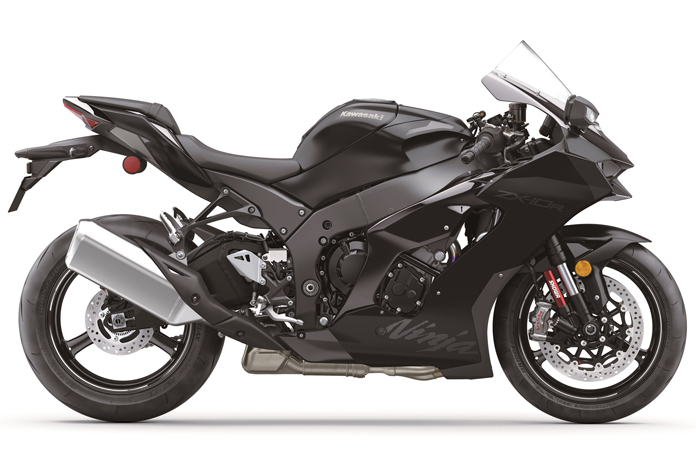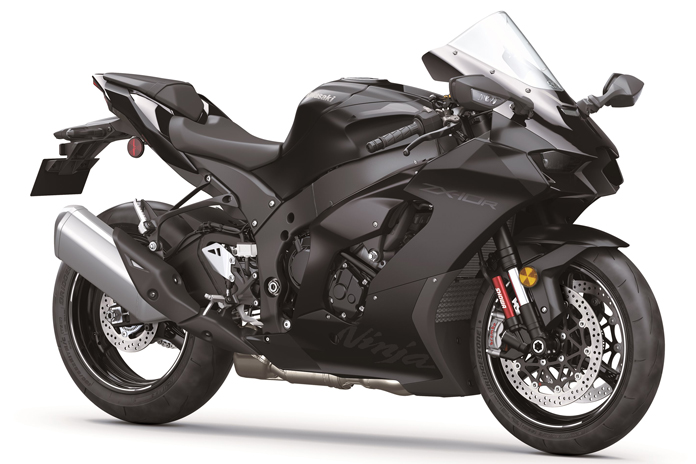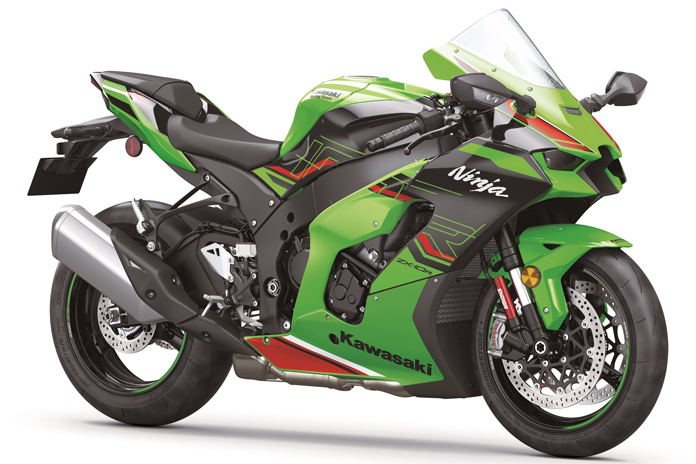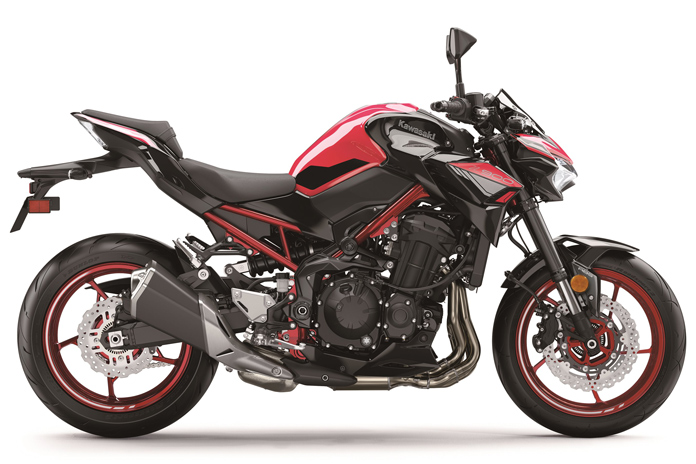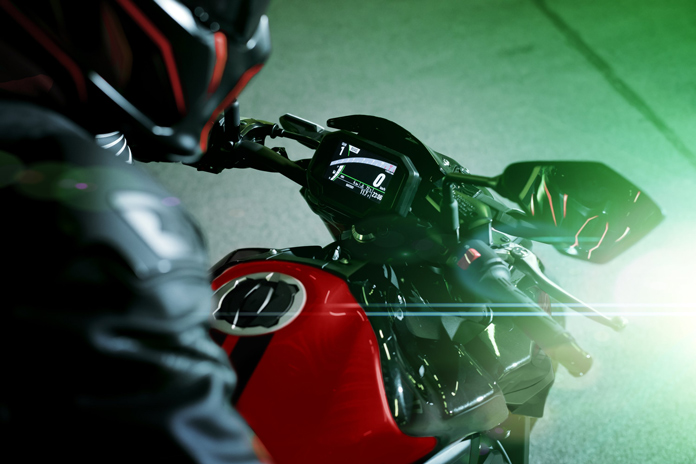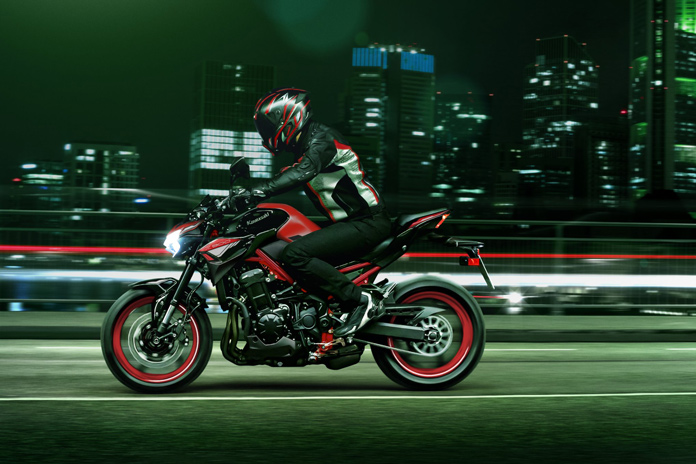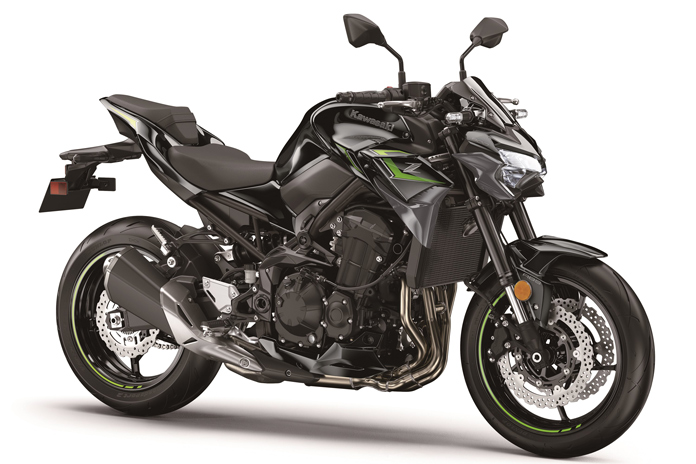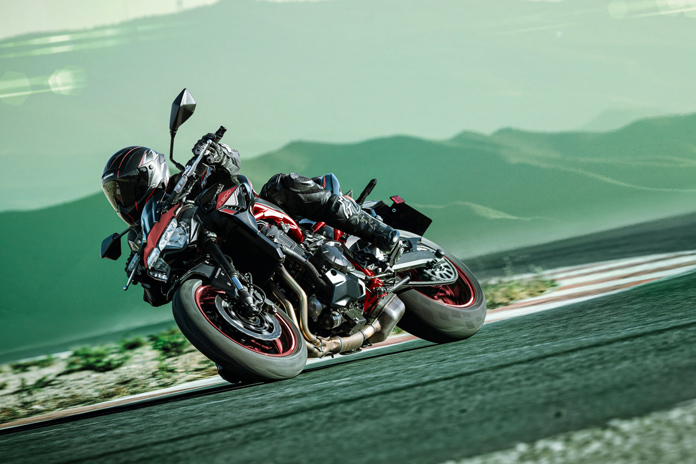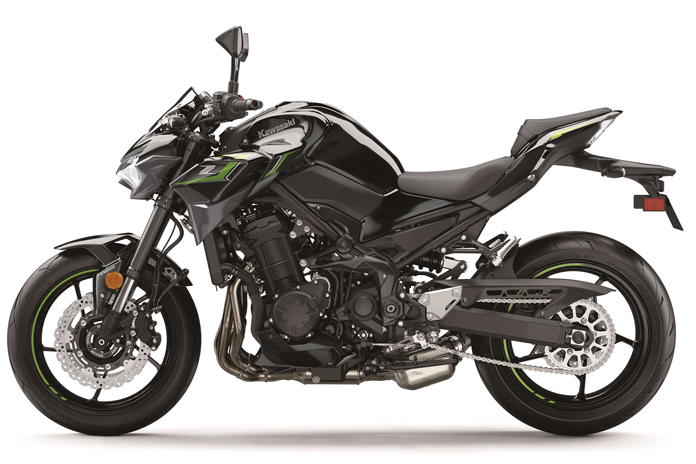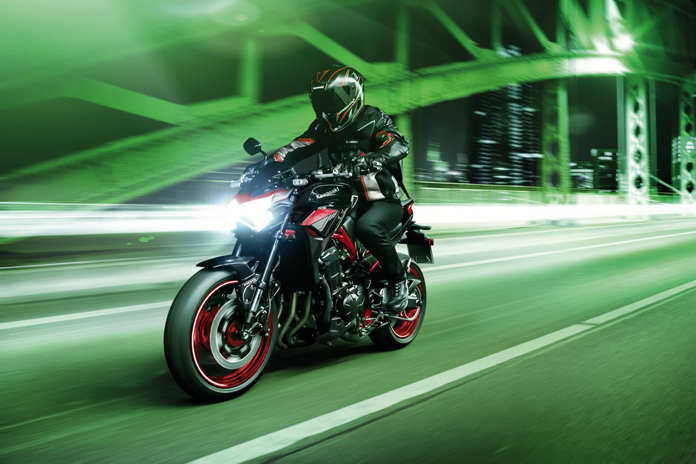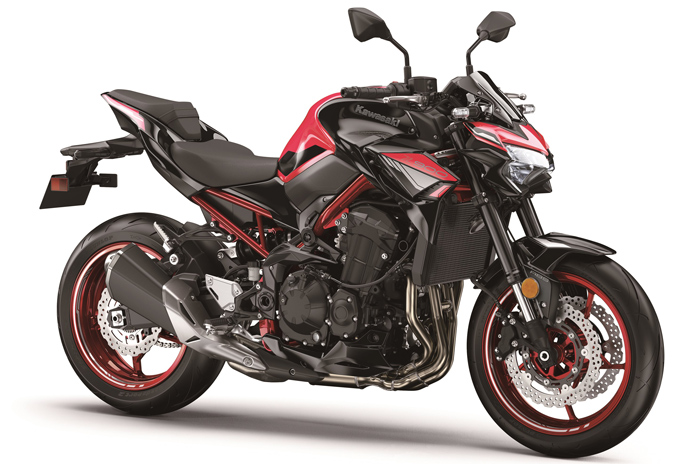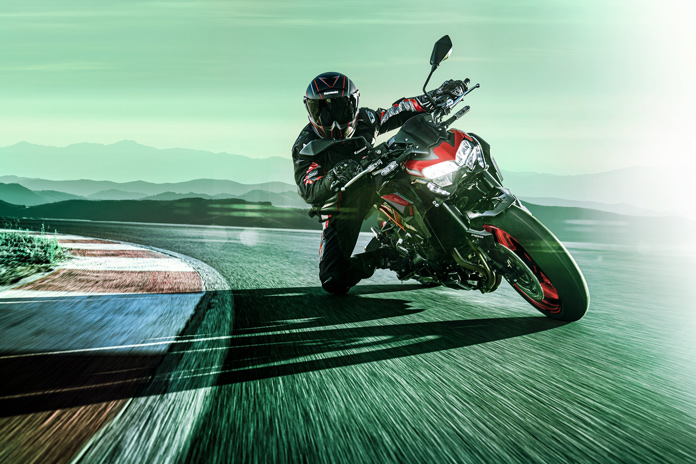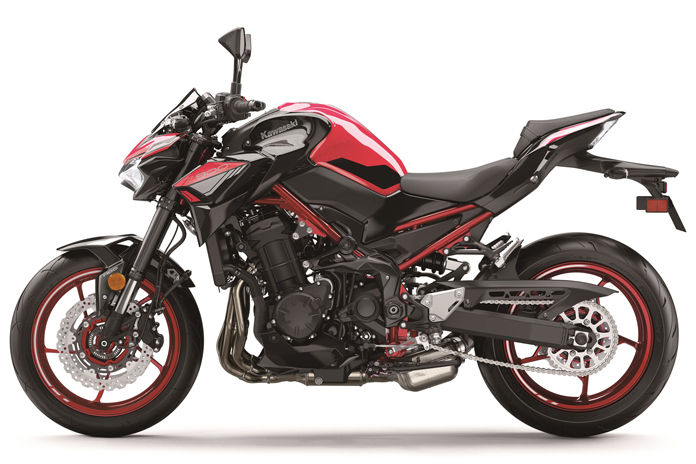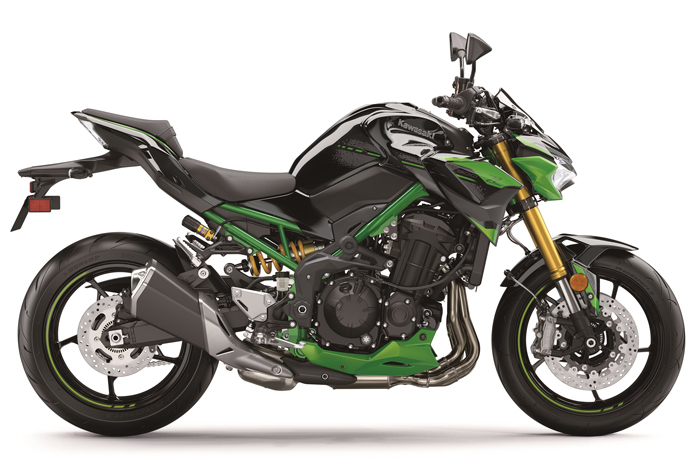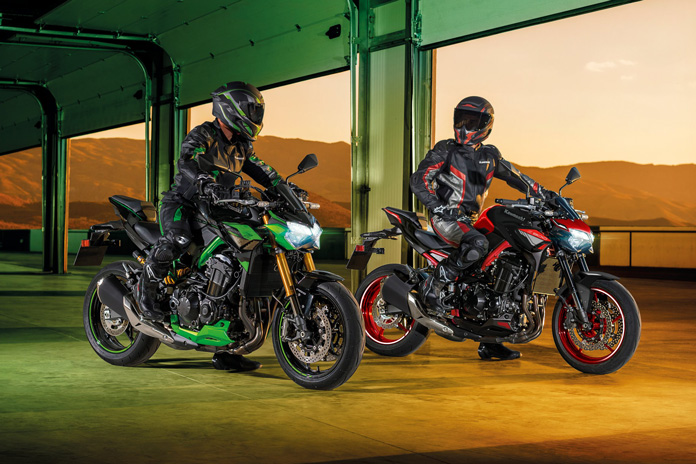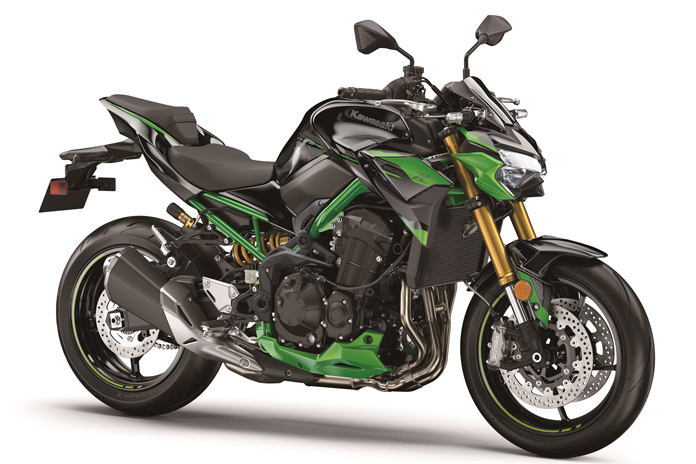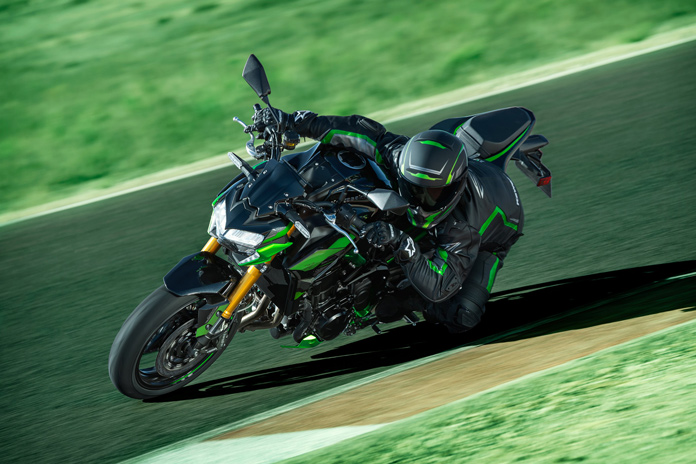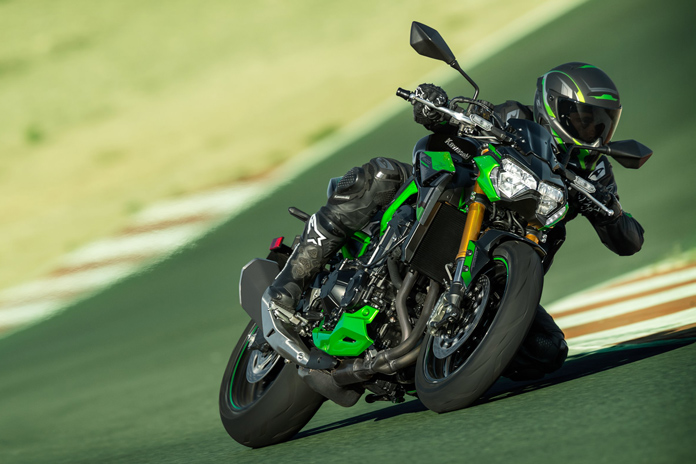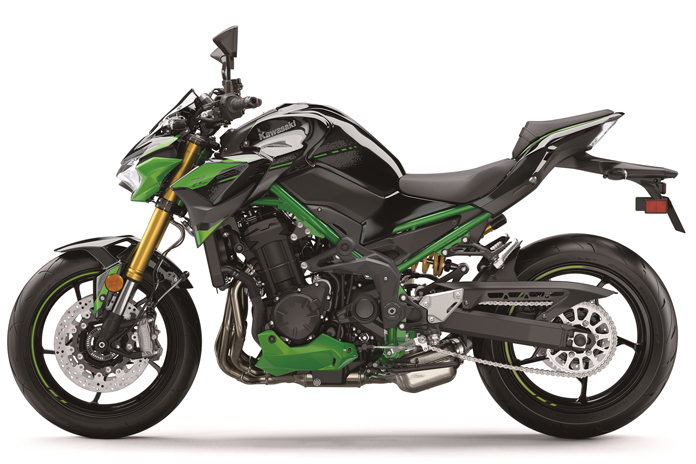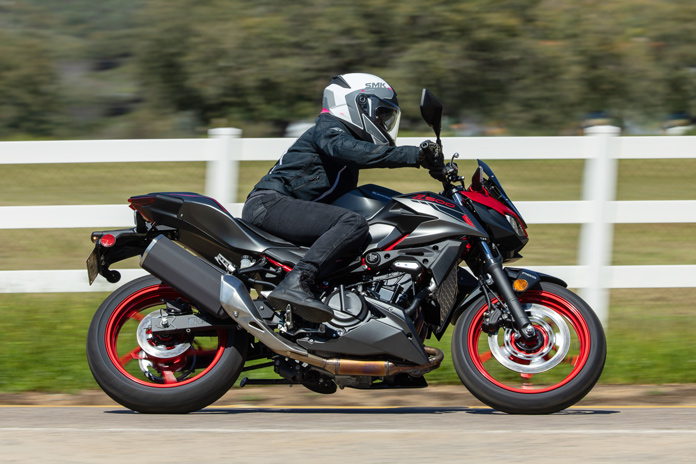
Last year, Kawasaki debuted a new 451cc parallel-Twin in the Eliminator cruiser. Displacement was increased over that of the Ninja 400 sportbike and Z400 naked bike with a longer stroke, resulting in an increase in torque. For 2024, Kawasaki has migrated that engine back into the Ninja and Z series, and the larger engine prompted new names – now the Ninja 500 and the Z500.
Related: 2024 Kawasaki Eliminator Review | First Ride
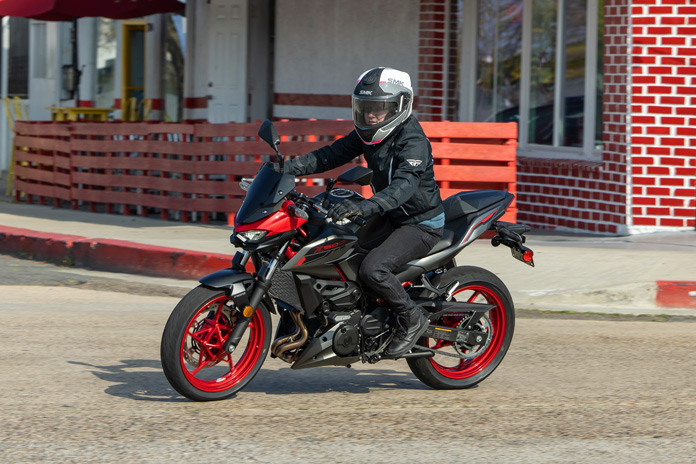
When we test rode the Eliminator, we enjoyed the extra torque and performance of the larger engine. And while there’s plenty to like about a cruiser, the Ninja and Z series have strong fanbases who will certainly be glad to see the upgraded engine in their preferred platforms. We got the opportunity to test the Z500 SE for a day in and around San Diego, and we found the engine and other upgrades particularly well-suited to the naked bike’s package and target customers.
Survey Says… | Kawasaki Z500
While developing the Z500, Kawasaki paid special attention to what customers were looking for by surveying customers interested in the Z400, as well as dealers who served these customers. The responses informed the Z500’s upgrades, resulting in a motorcycle that should suit the needs of customers who are most likely to buy it.
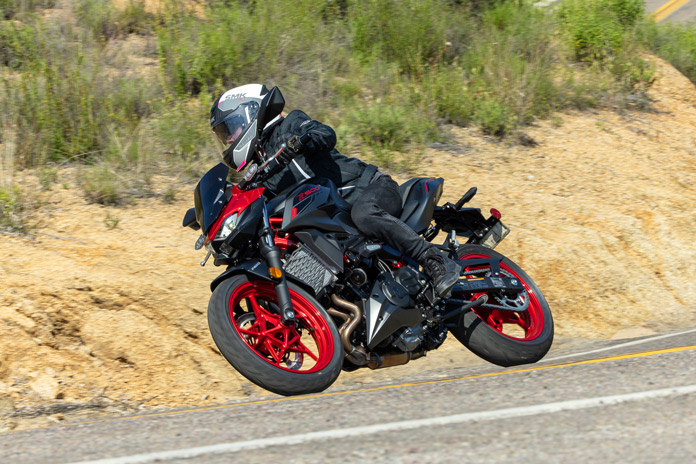
Kawasaki found that most shoppers interested in the Z400 were beginner riders with less than one year of experience, in their mid-30s, and not interested in passenger accommodations. They were looking for a bike for commuting duties and backroad rides, and they wanted it to be capable of highway speeds and keeping up with traffic while remaining lightweight and nimble. Interestingly, while the Z400 is mostly the same as the Ninja 400 but with less bodywork and different ergonomics, Kawasaki found that customers who were looking for a naked bike were not interested in a sportbike and vice versa. Kawasaki also found that style was an important driving factor for purchase.
With the data in hand, Kawasaki designers got to work to address this list of customer needs.
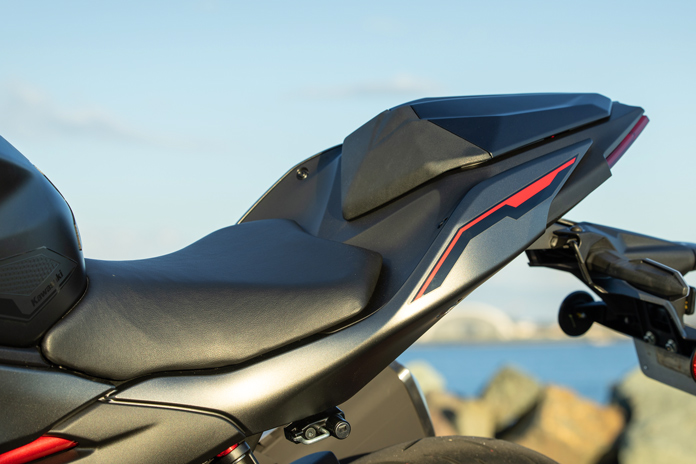
Ready to Rev | Kawasaki Z500
The new engine is the most significant upgrade over the Z400. The 451cc parallel-Twin has a bore and stroke of 70.0mm and 58.6mm, and it now makes a claimed 51 hp at 10,000 rpm and 31.7 lb-ft of torque at 7,500 rpm. The torque, up from the Z400’s 28 lb-ft, also arrives 500 rpm earlier.
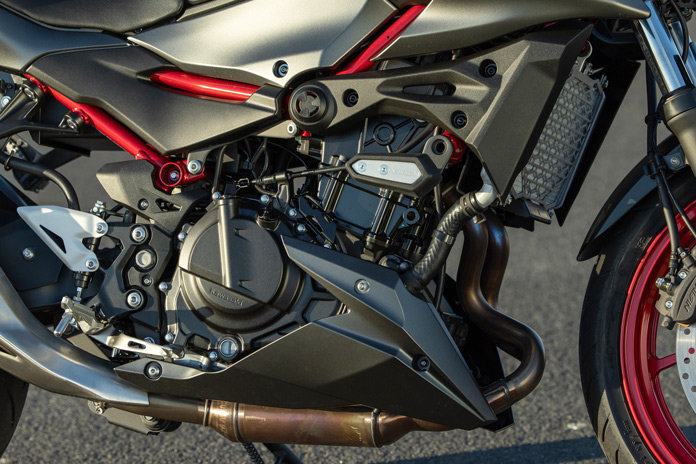
During our test ride, we spent the morning riding around the city streets commuter-fashion, and we found the engine ideal for this role. The extra torque made for quick acceleration while remaining easily manageable and unintimidating. When we ventured onto the canyon roads south of town, the Z500 proved itself to be capable of spirited riding. Vibrations were noticeable above about 7,000 rpm, but they weren’t so bad as to become a problem.
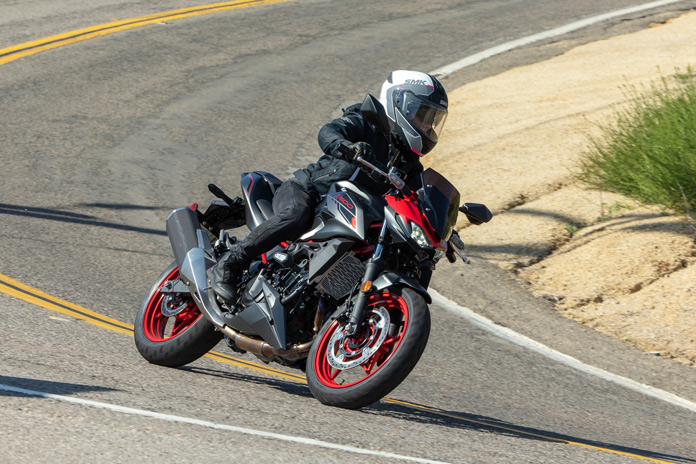
The Z500 features a slip/assist clutch with an incredibly light feel – one of the lightest I’ve tested and another factor that would make this bike a good fit for commuting. Stopping at a stoplight or stop sign every block was no problem for my left hand. Press launches like this involve lots of U-turns for repeated photo passes, so we were especially glad of the super light clutch feel during our ride.
Nimble Naked | Kawasaki Z500
The chassis comes unchanged from the Z400. Like its predecessor, the Z500 rides on a trellis frame with the engine as a stressed member. It features a short-wheelbase/long-swingarm configuration with a wheelbase of 54.1 inches, a seat height of 30.9 inches, and a fuel capacity of 3.7 gallons. The standard version weighs 366 lb, while the SE version with included accessories weighs 370 lb.
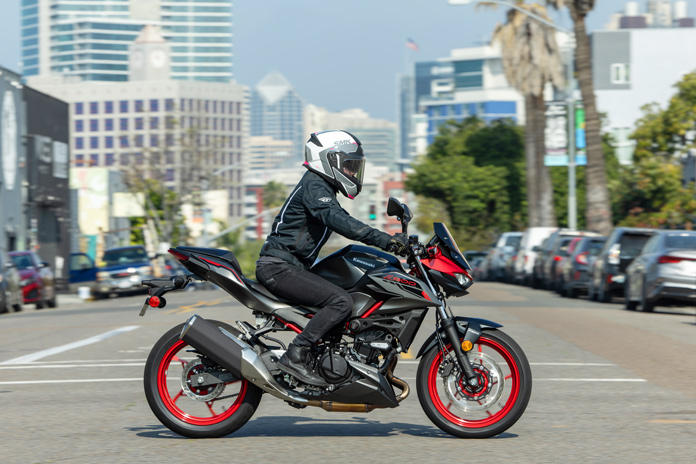
GEAR UP
- Helmet: SMK Gullwing
- Jacket: Fly Racing Street Butane Women’s
- Gloves: Fly Racing Street Brawler
- Pants: Alpinestars Daisy V2 Women’s Riding Denim
- Boots: Highway 21 Axle Leather Waterproof
Suspension comes in the form of a 41mm Showa fork and a bottom-link Uni-Trak rear shock with five-way preload adjustability via the included tool kit. A 310mm front disc is gripped by a 2-piston caliper, and a 220mm rear disc is paired with a 2-piston caliper. Unlike previous Z-series bikes, both the standard Z500 and the SE version feature ABS.
The wheels feature a star-pattern, five-spoke design, are 17 inches front and rear, and are shod with Dunlop Sportmax GPR-300F tires.
Upon first rolling out of the hotel parking lot for our test ride, my first impression was how nimble the Z500 is. Tight turns into parking lots are stress-free, and the bike feels slim between the legs. New for the Z500 is a flatter seat shape and new seat cushion, adding comfort over the previous Z400.
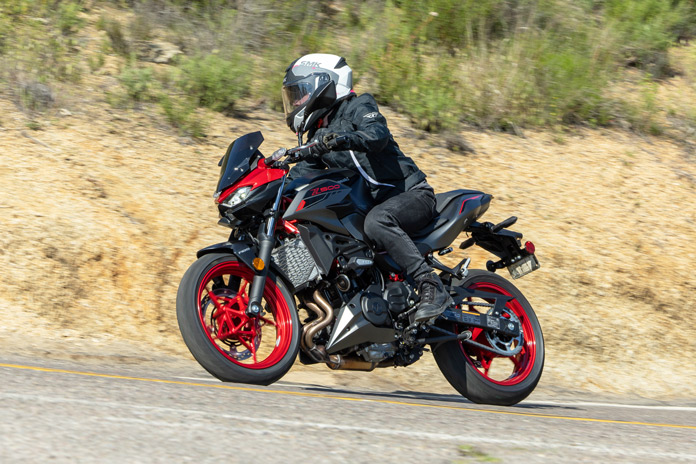
The riding position is fairly upright with a handlebar that’s taller and wider than the Ninja’s. The bike also features new mirror stays meant to reduce mirror vibration, and although they still vibrate at highway speeds, they’re crystal-clear and smooth while riding around town.
The nimbleness of the Z500 made city riding easy, and it made canyon roads exciting. The bike feels as light as the spec chart claims, if not lighter. The suspension didn’t soak up every bump in the road, but the bike remained stable while being flicked through sinuous curves and inspired confidence. On Kawasaki’ list of customer needs, the Z500 gets a positive mark on being a capable and fun machine for both city traffic and backroads sprints.
Sugomi Style | Kawasaki Z500
Styling is an important factor for many motorcycle shoppers. The Z500 comes with updated styling over the Z400, and while it’s still recognizably a Z-series bike, it looks cleaner and meaner. Kawasaki has been using the term “Sugomi” to describe its Z-series styling for years, and this one looks more predator-like than ever.
One styling highlight of the Z500 is a new triple-headlight configuration. The top two lights are low-beams, with the bottom light being high-beam. We rode during the day and didn’t get to see how the headlights illuminate the road at night, but the LED lights looked bright and clear.
Other styling changes include sharper bodywork and cleaner-looking side covers. The SE version comes with an under cowl and rear seat cowl that add to the Z500’s appearance. The upswept exhaust parallels the line of the rear section, and the bodywork floats above the engine to highlight it.
Standard or SE? | Kawasaki Z500
We rode the SE version during our test ride, which includes a few features not found on the standard. The most noticeable difference is the color. The standard version only comes in recognizable Kawasaki Candy Lime Green, while the SE version only comes in Permission Candy Red.
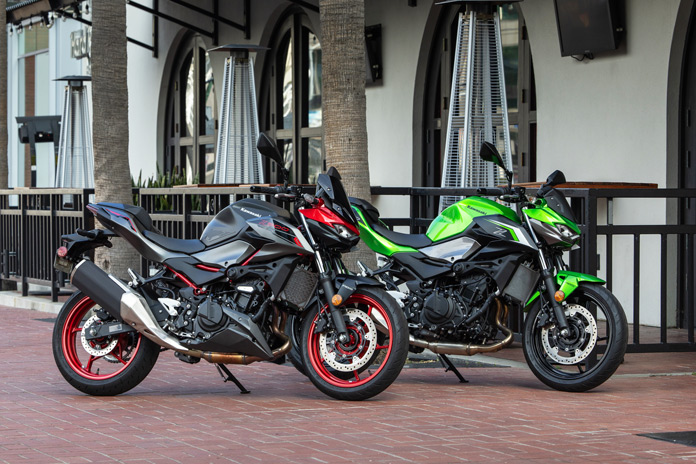
The SE also includes a 4.3-inch TFT display to replace the standard version’s LCD display. Both displays allow Bluetooth connection to a smartphone via Kawasaki’s Rideology app, where riders can check vehicle info, a riding log, a maintenance log, and other details. While both displays have the same functionality, the TFT looks much nicer and more modern, and the background can be changed to black or white.
Both displays also feature the Economic Riding Indicator, which appears on the screen to indicate favorable fuel consumption. The indicator is unobtrusive on the screen, and I saw it appear during more gentle riding while keeping revs low. We prioritized fun over efficiency during our time aboard the Z500, but it might prove to be a useful feature for everyday riding.
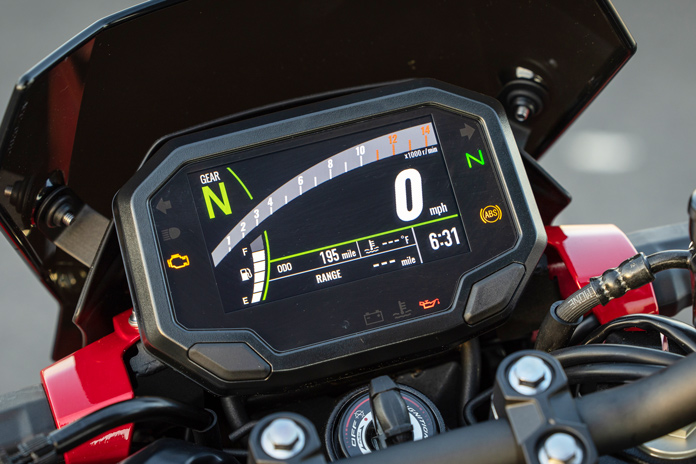
Additional features on the SE include LED turnsignals (the standard has LED headlights and taillights), a meter cover, a radiator screen, frame sliders, a rear seat cowl, tank and knee pads, a USB-C charger, and an undercowl. The price difference between the two versions is $700. Most of the accessories on the SE are also available for the standard version, but it’ll save you a few hundred dollars to get the SE instead of accessorizing the standard to the same degree.
The Kawasaki Z500 fits its purpose to a T. It’s a fun, easy-to-ride bike, and the upgrades since the previous Z400 make it even better without a big jump in price. Those shoppers who filled out Kawasaki’s survey should be pleased with the results of their efforts. We certainly were.
2024 Kawasaki Z500 (SE) Specifications
- Base Price: $5,599 ($6,299)
- Warranty: 1 yr.
- Website: Kawasaki.com
- Engine Type: Liquid-cooled parallel-Twin, DOCH w/ 4 valves per cyl.
- Displacement: 451cc
- Bore x Stroke: 70.0 x 58.6mm
- Horsepower: 51.0 hp @ 10,000 rpm (factory claim)
- Torque: 31.7 lb-ft @ 7,500 rpm (factory claim)
- Transmission: 6-speed, cable-actuated slip/assist wet clutch
- Final Drive: Chain
- Wheelbase: 54.1 in.
- Rake/Trail: 24.5 degrees/3.6 in.
- Seat Height: 30.9 in.
- Wet Weight: 366 lb (370 lb)
- Fuel Capacity: 3.7 gal.
The post 2024 Kawasaki Z500 SE Review | First Ride appeared first on Rider Magazine.
Source: RiderMagazine.com

